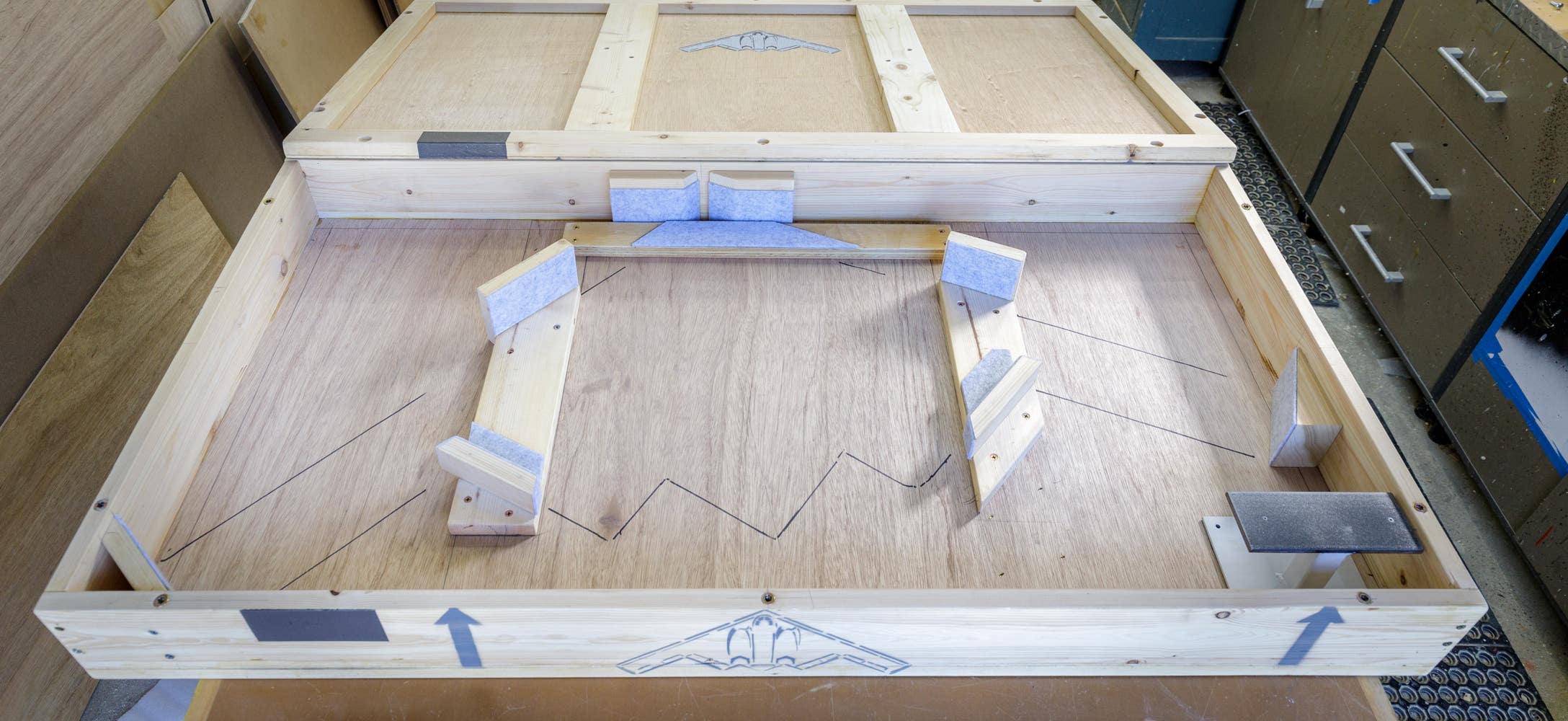
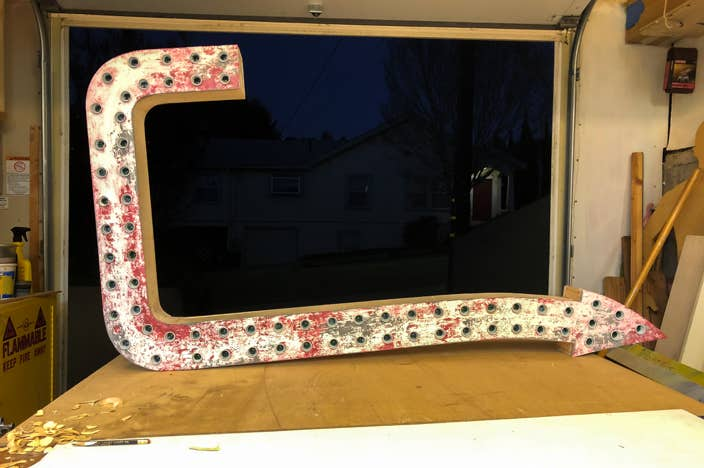
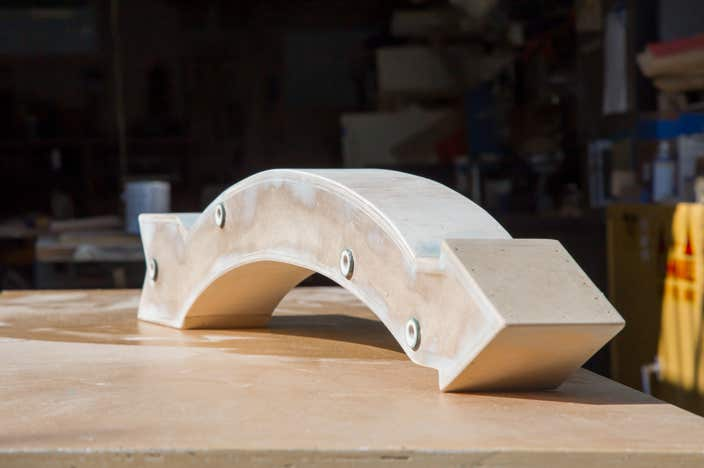
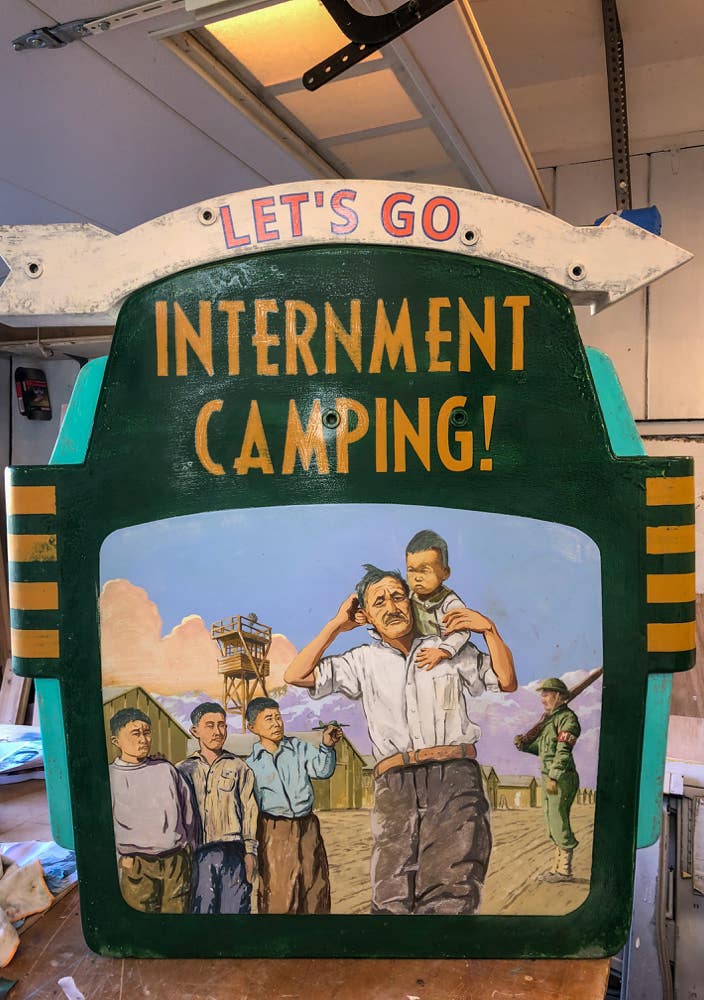
1st Strike arrow build
Internment arrow
Paint complete

Internment arrow placed
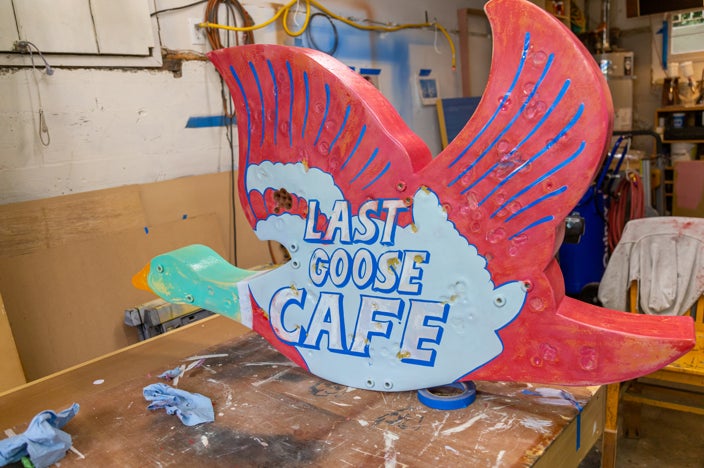
Last Goose before aging
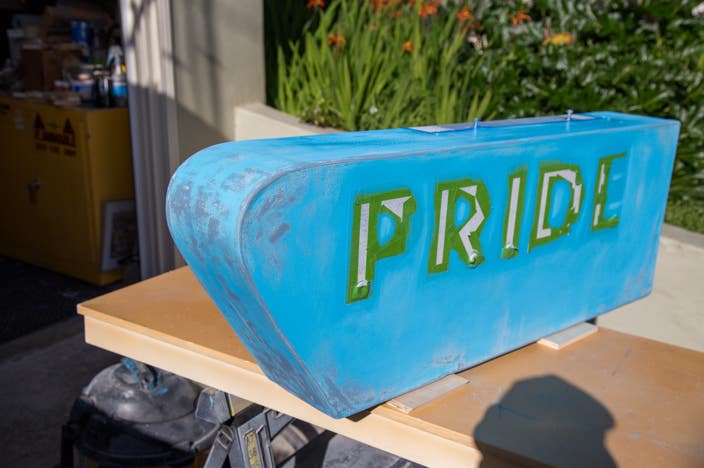
Pride Cleaners aging test
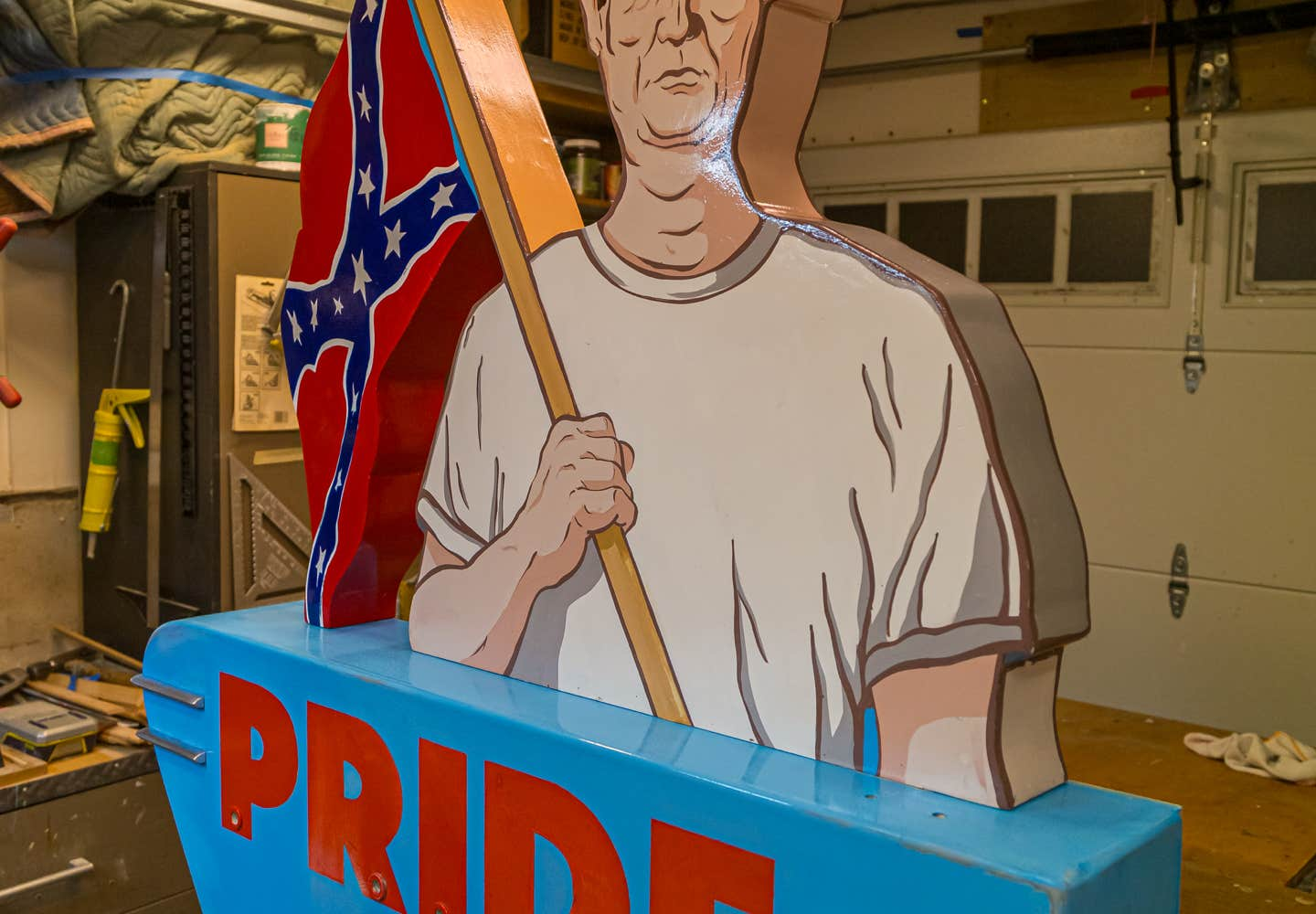

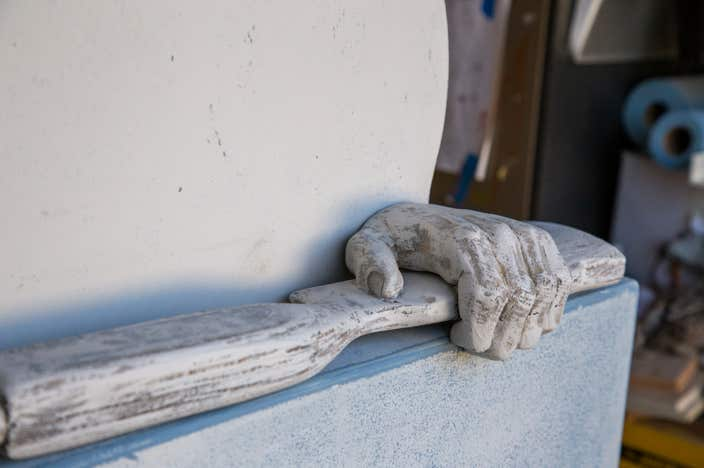
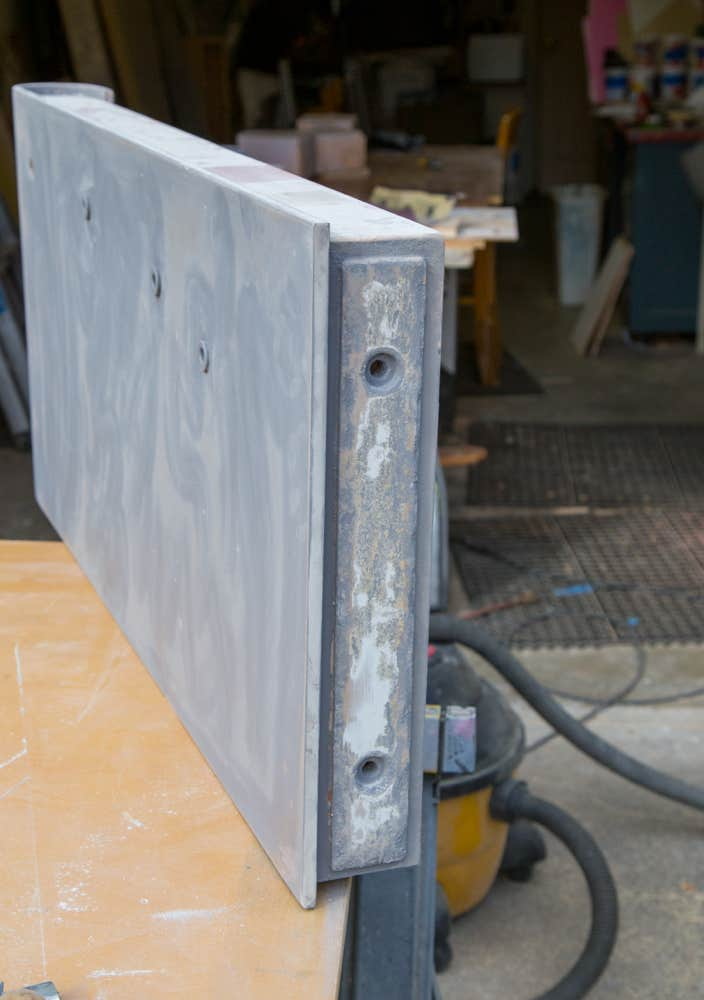
block aging and lamp receptacles
Internment painting start
Carved hand and shotgun
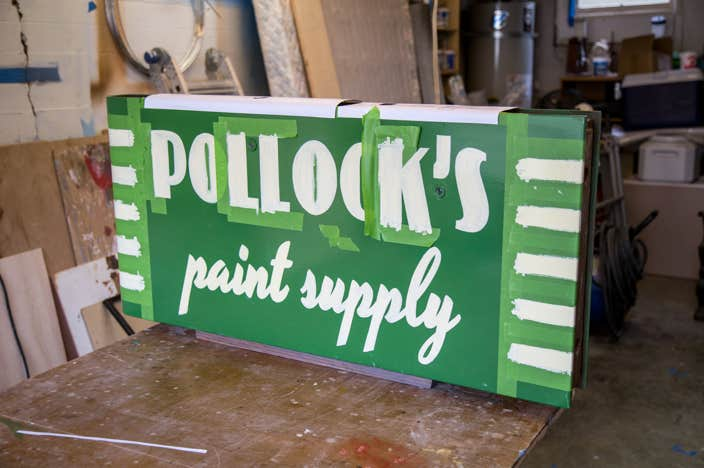
Pride before aging
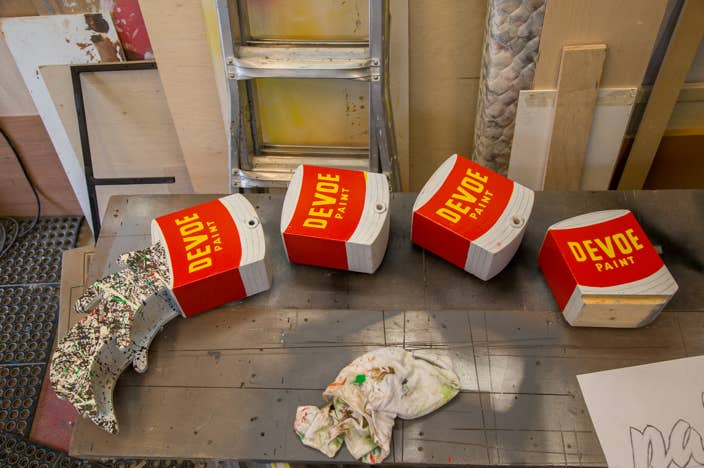
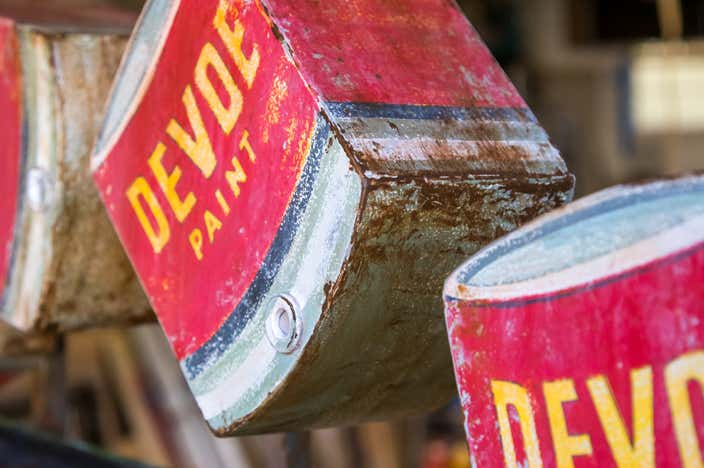
Faux metal bar on Pollock’s paint
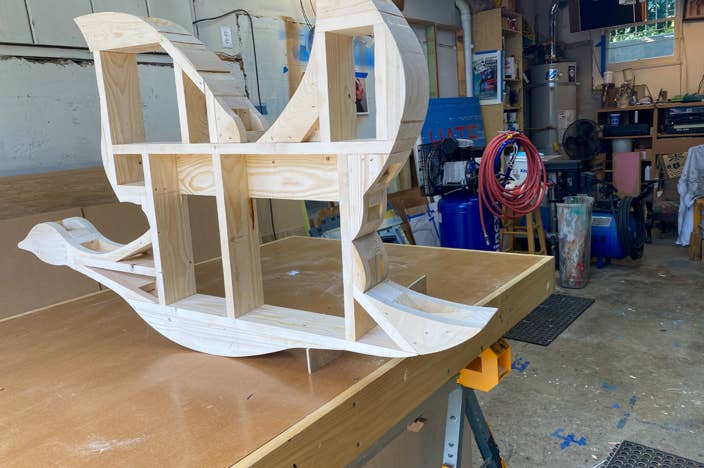
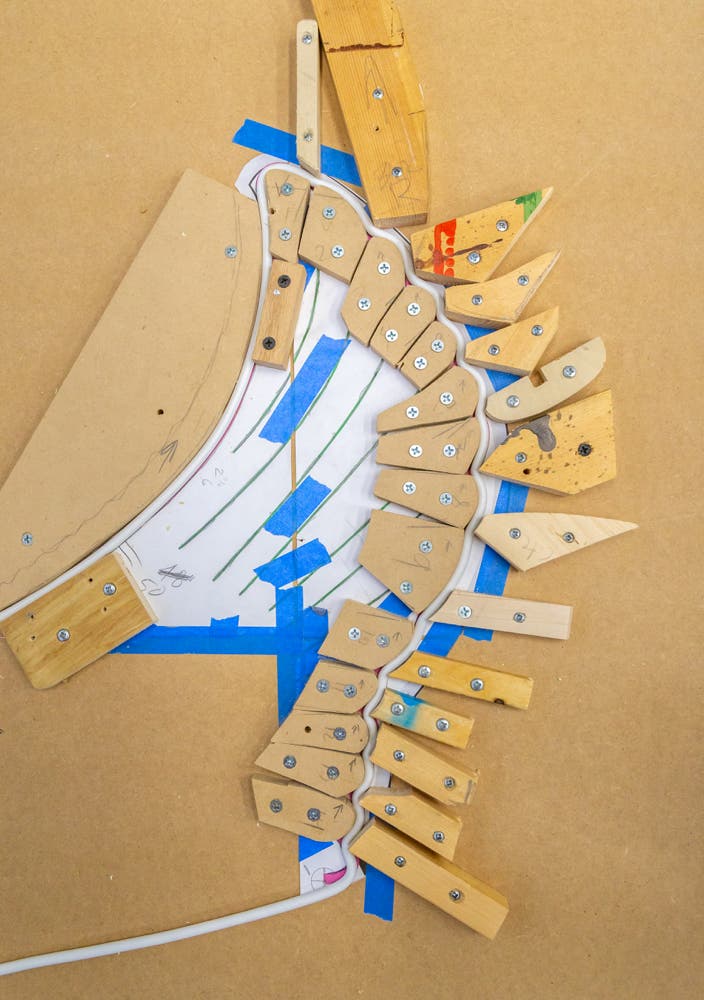
Pollock’s first paint
Last Goose framing
Bending faux neon for Last Goose Cafe sign by successively adding blocking to maintain desired shape. “Neon” material is aluminum armature wire inside painted vinyl tubing.
Pollock used Devoe House paint
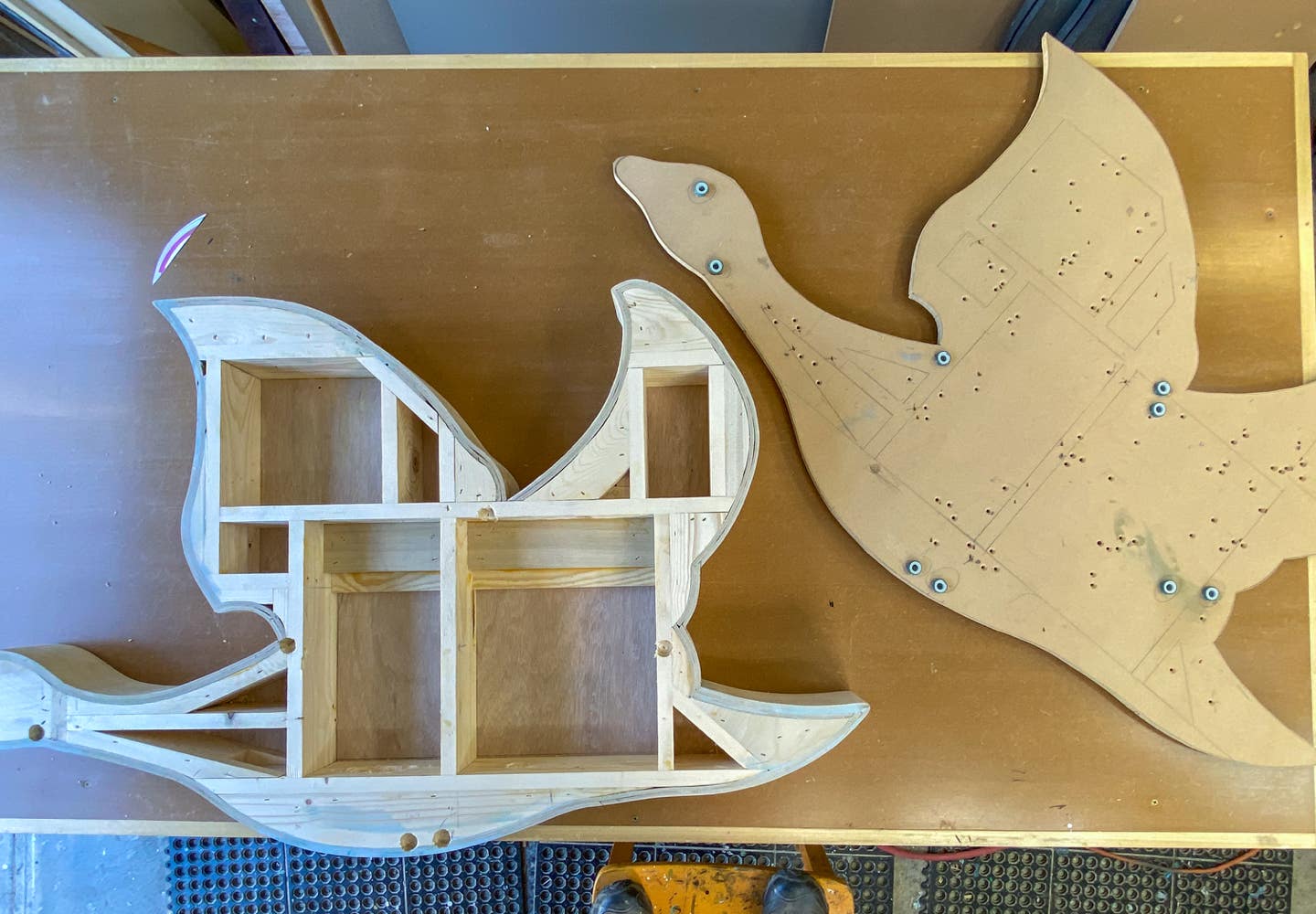
Detail paint cans
First drilled holes for faux shotgun blast
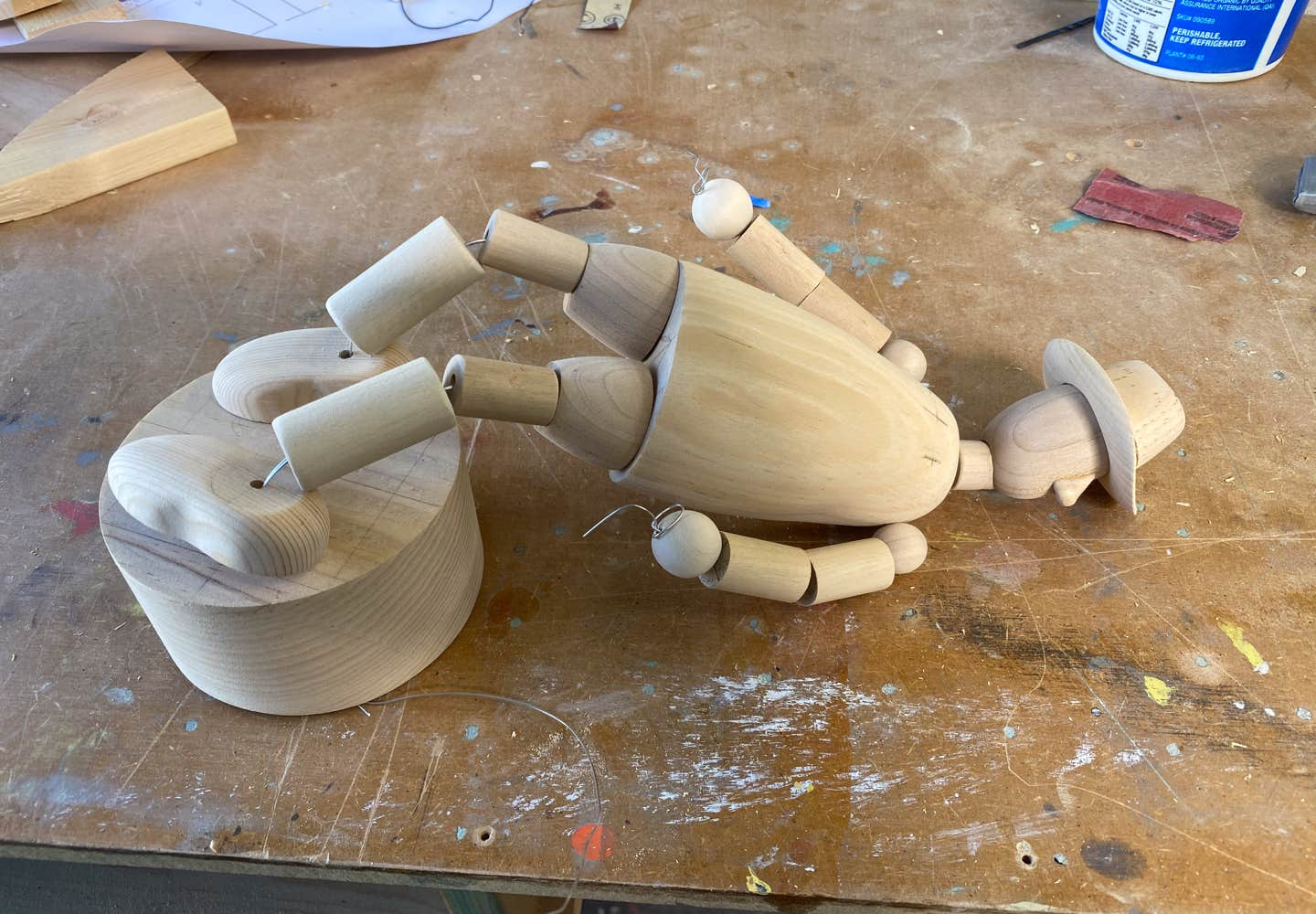
Collapsing maquette study for sculpture “Hollow”
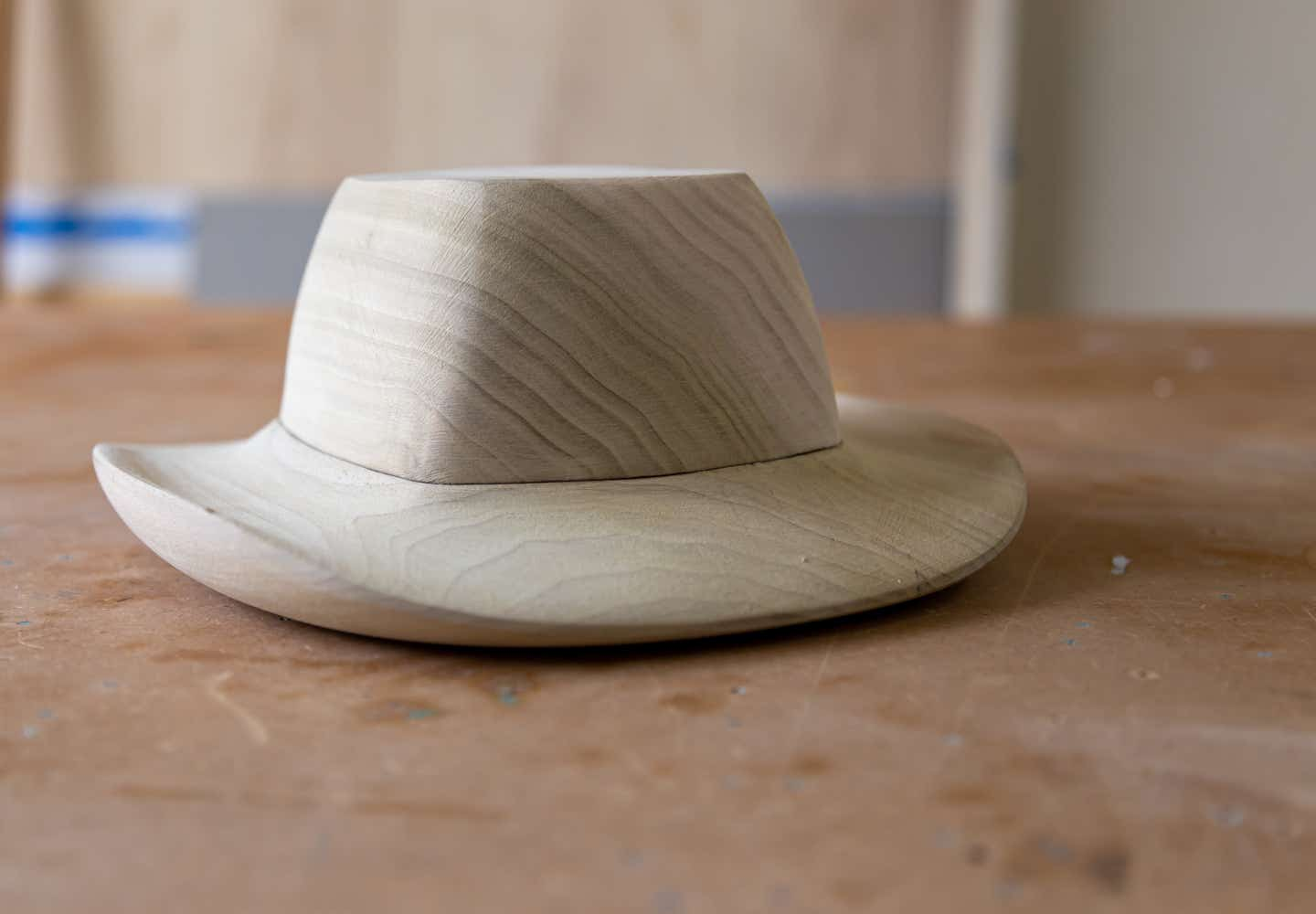
Hat for sculpture “Hollow” nearing completion
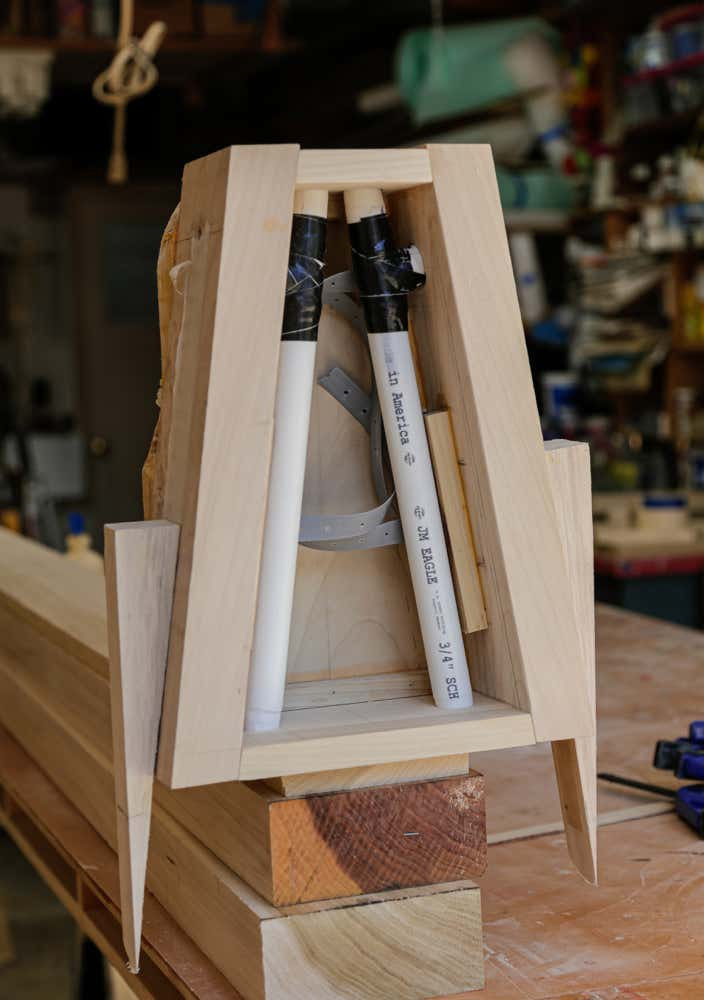
Inside of body for Hollow
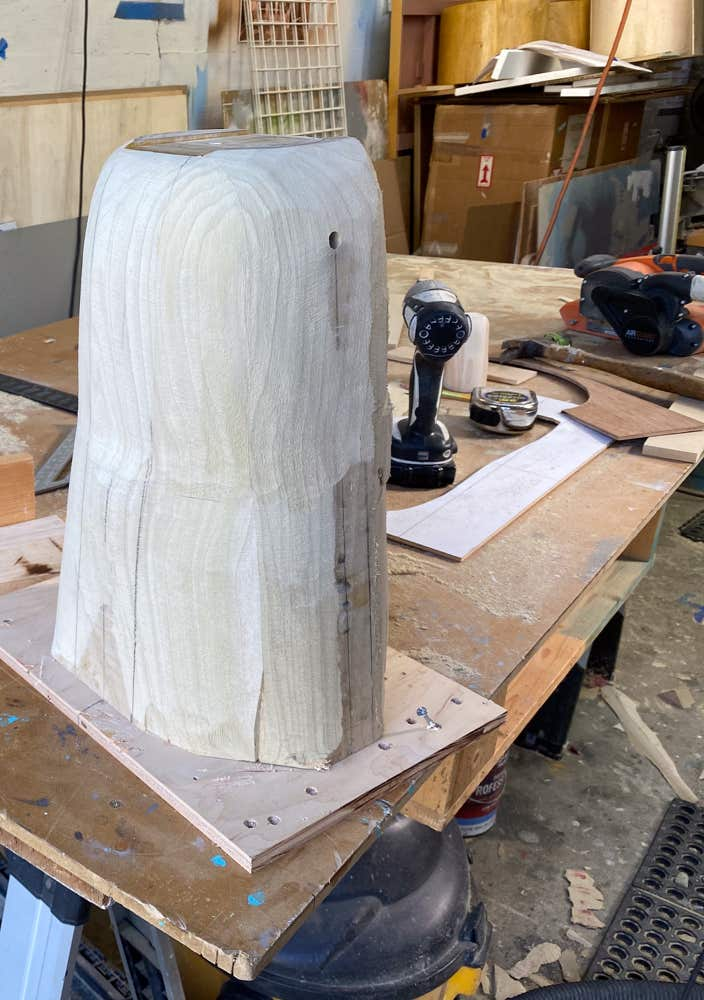
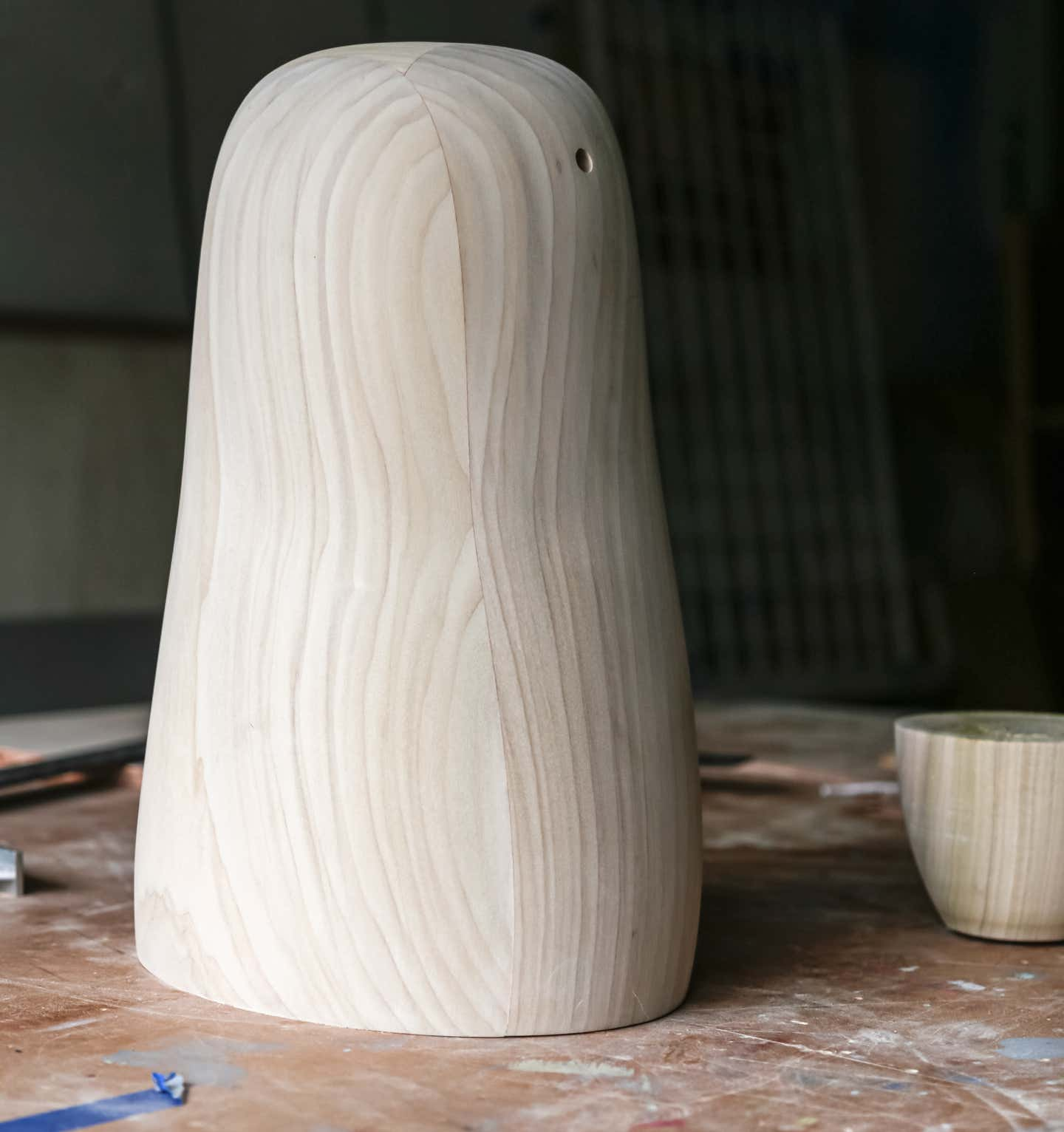
Rough body shaping
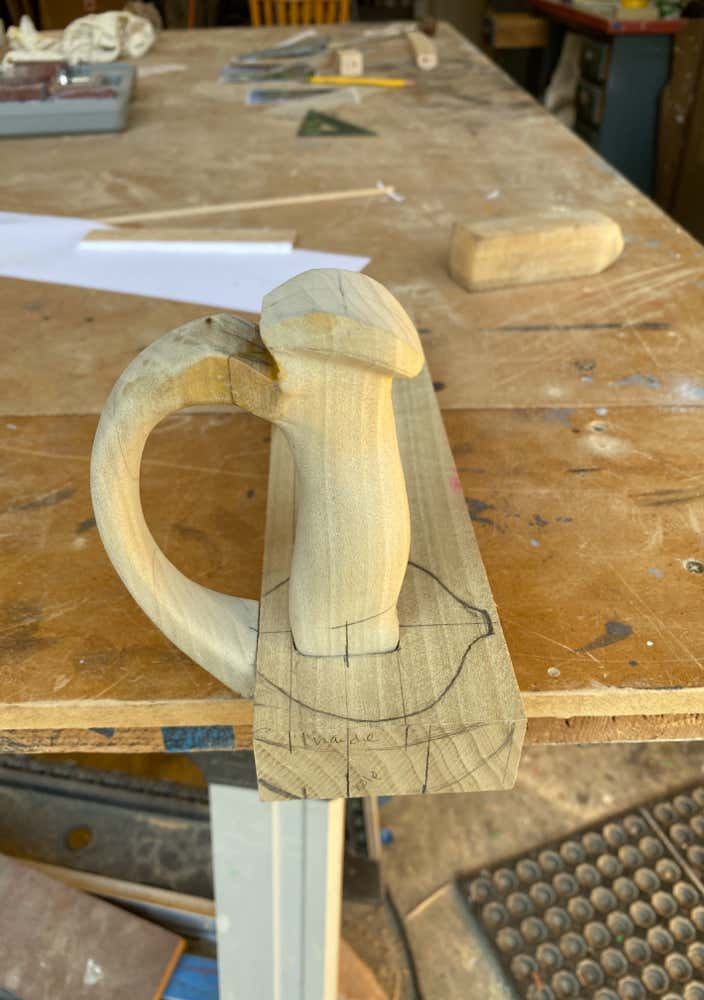
“Hollow” body sculpting complete

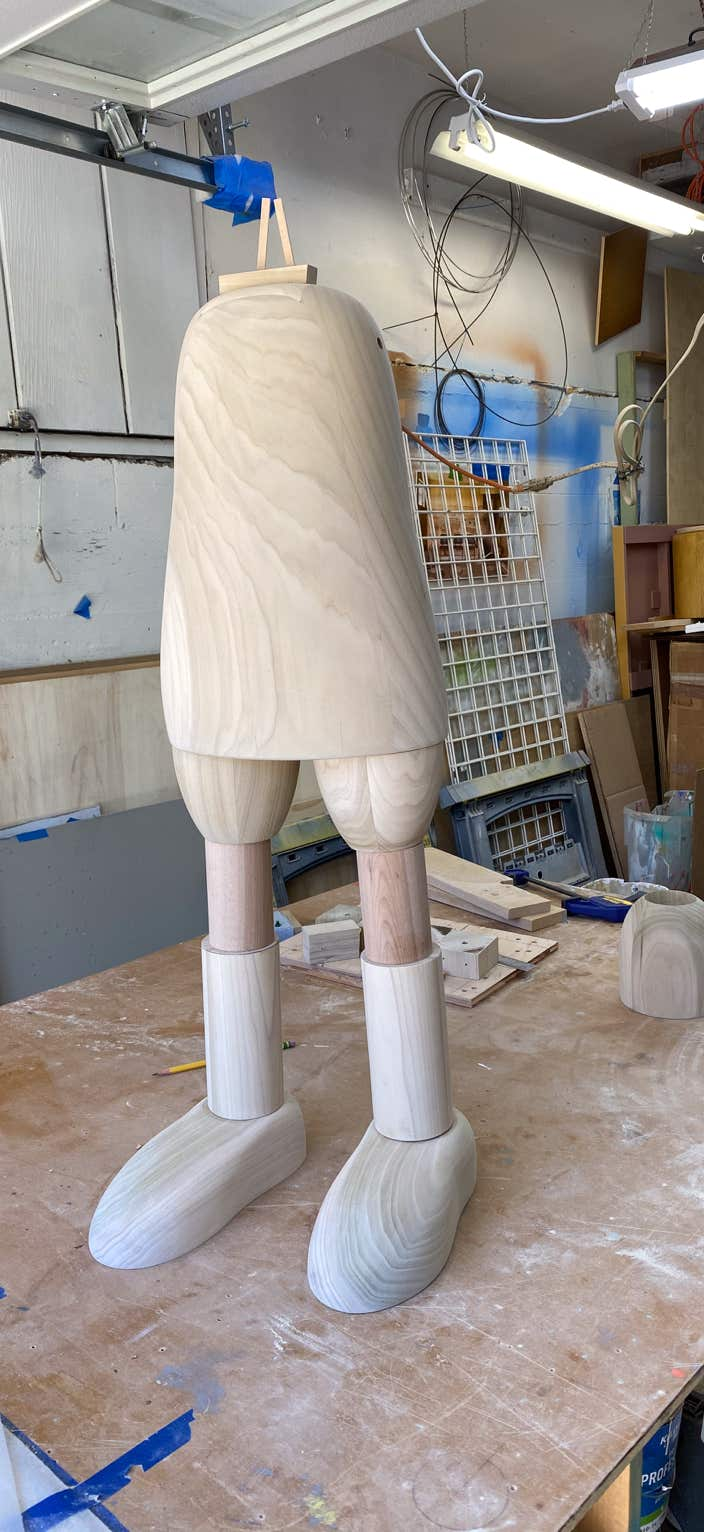
Starting hilt of battle sword
Nose with attachment dowel
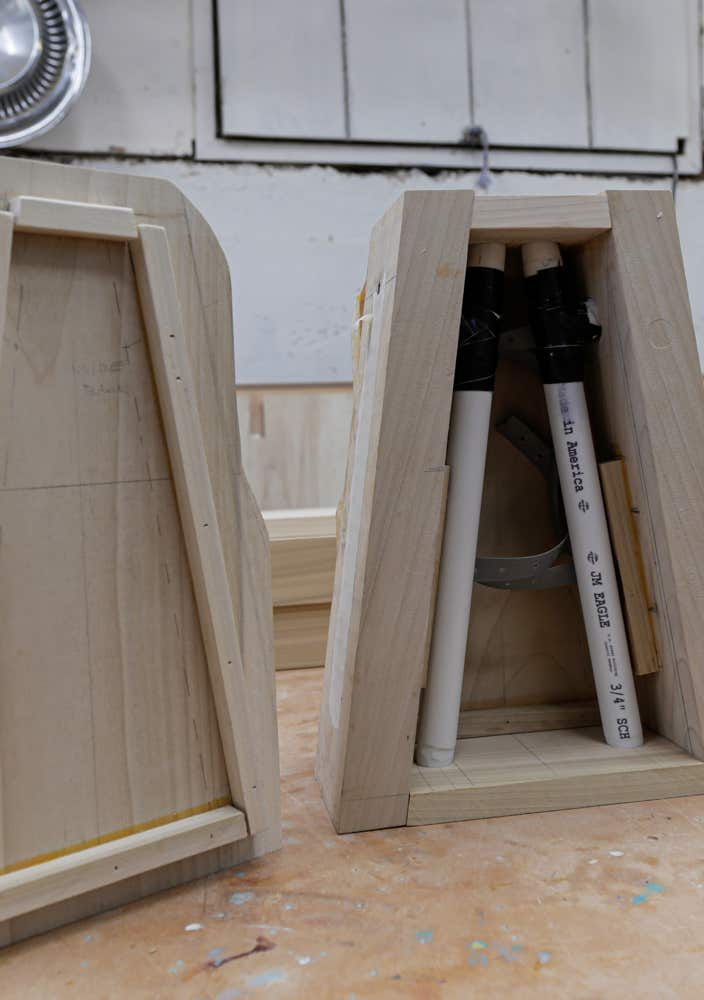

“Hollow’s” interior rope routing
Sword handle complete
Standing headless body
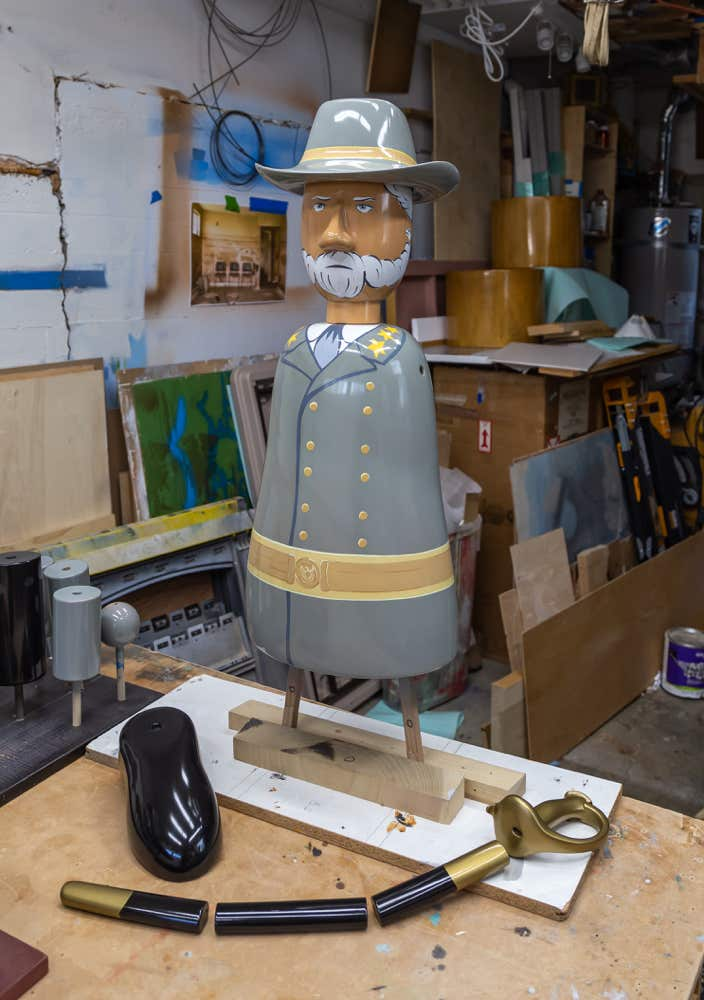
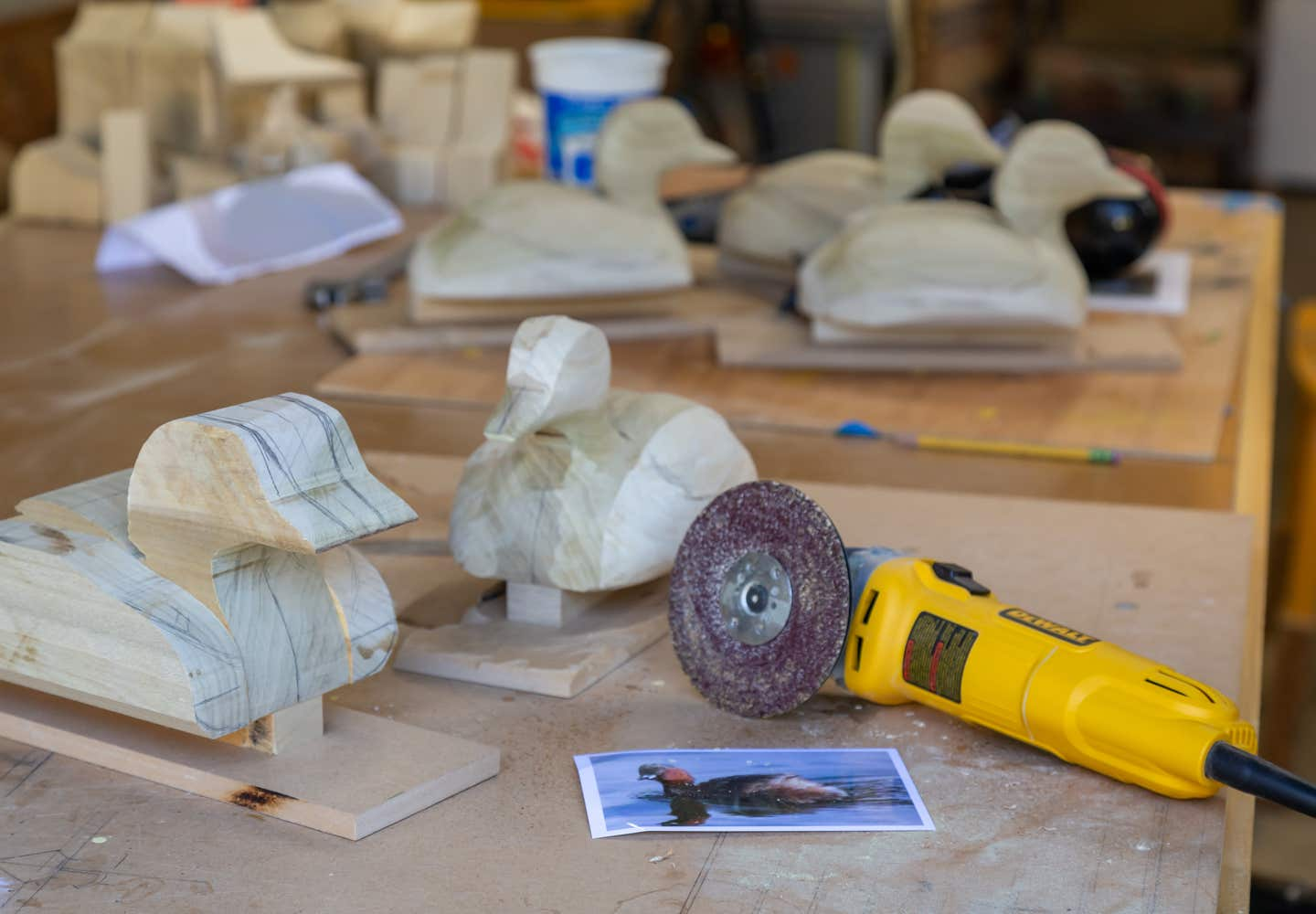
Parts painted
Shaping Grebe decoy bodies
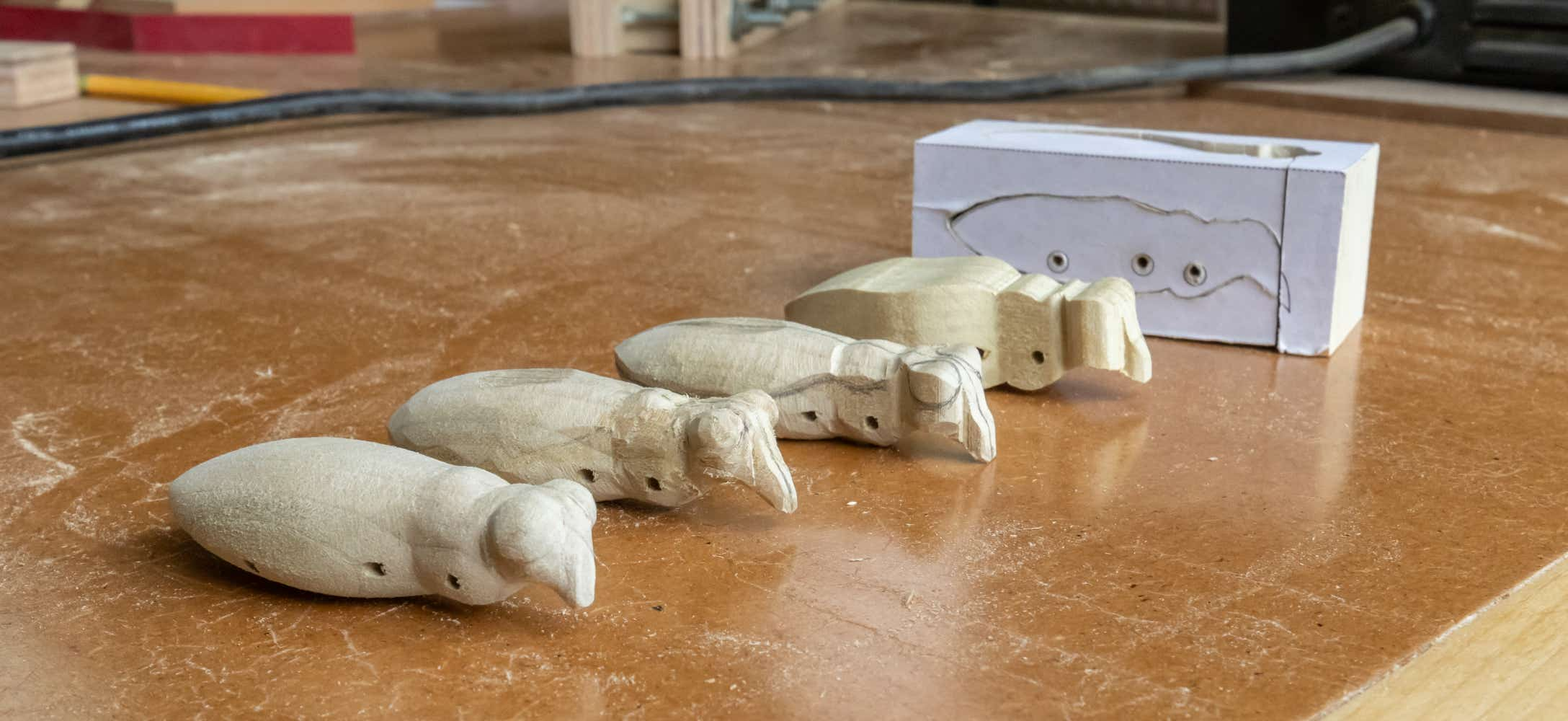
Four stages of shaping Hairy Neck Beetles, first shape being done with a scroll saw
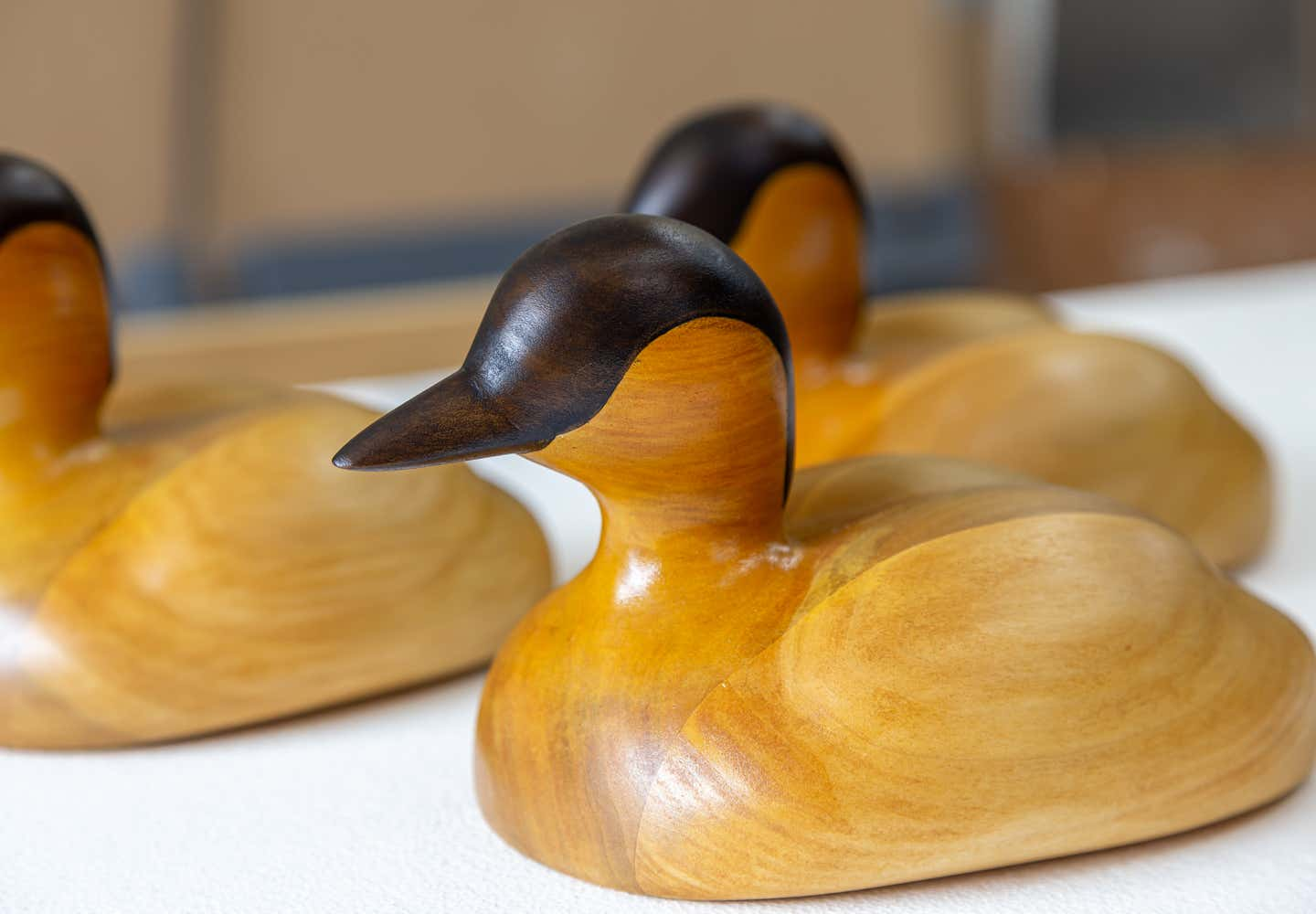

First amber shellac coat and deep raw umber dyed heads
Grebe feather layout
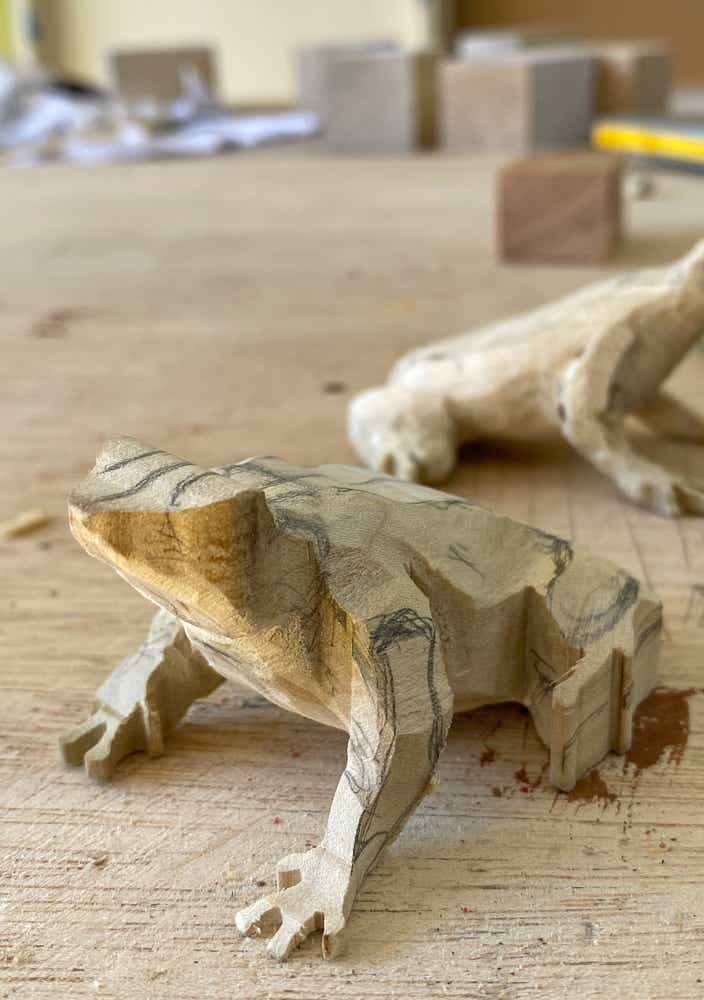
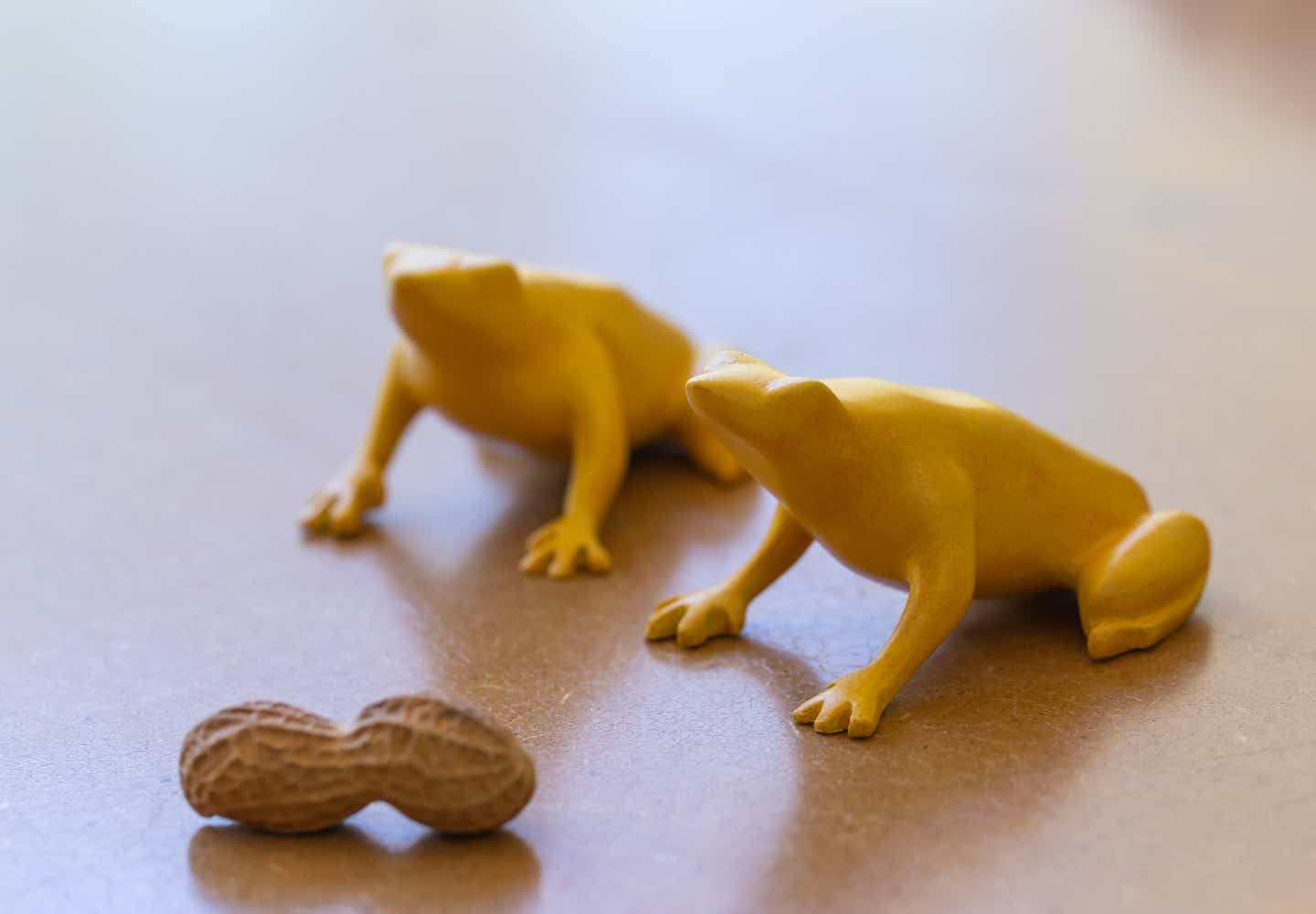
Rough shaping complete
First coat frog decoys
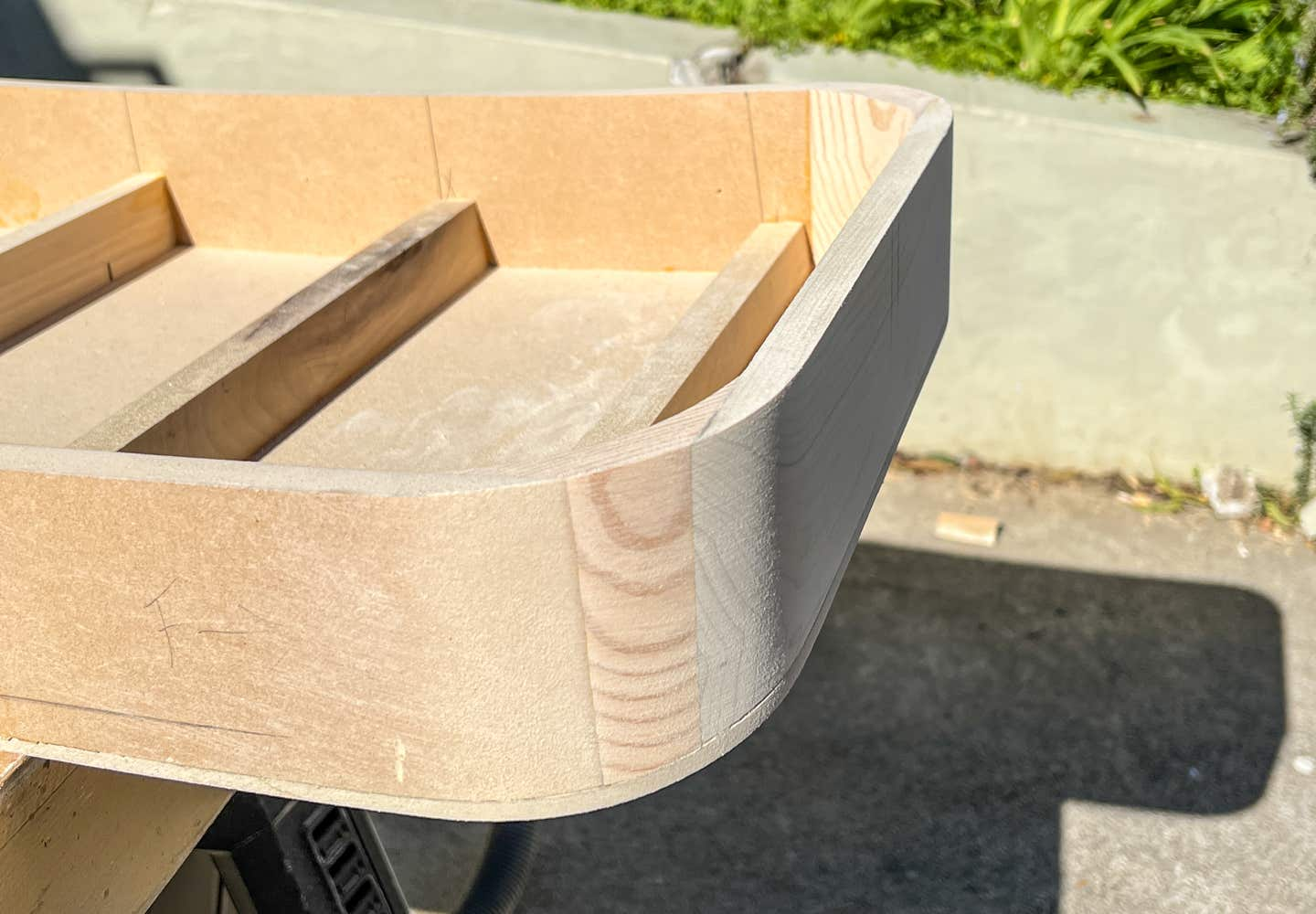
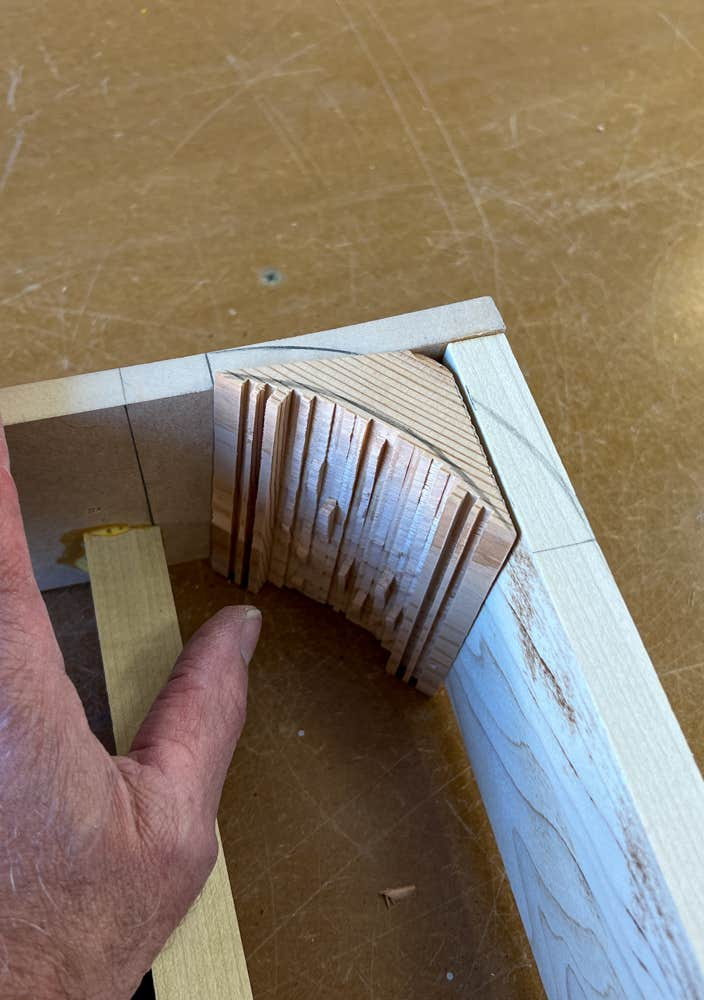
Front curve of Over Burdened Radio Flyer project
Curve piece to make corner
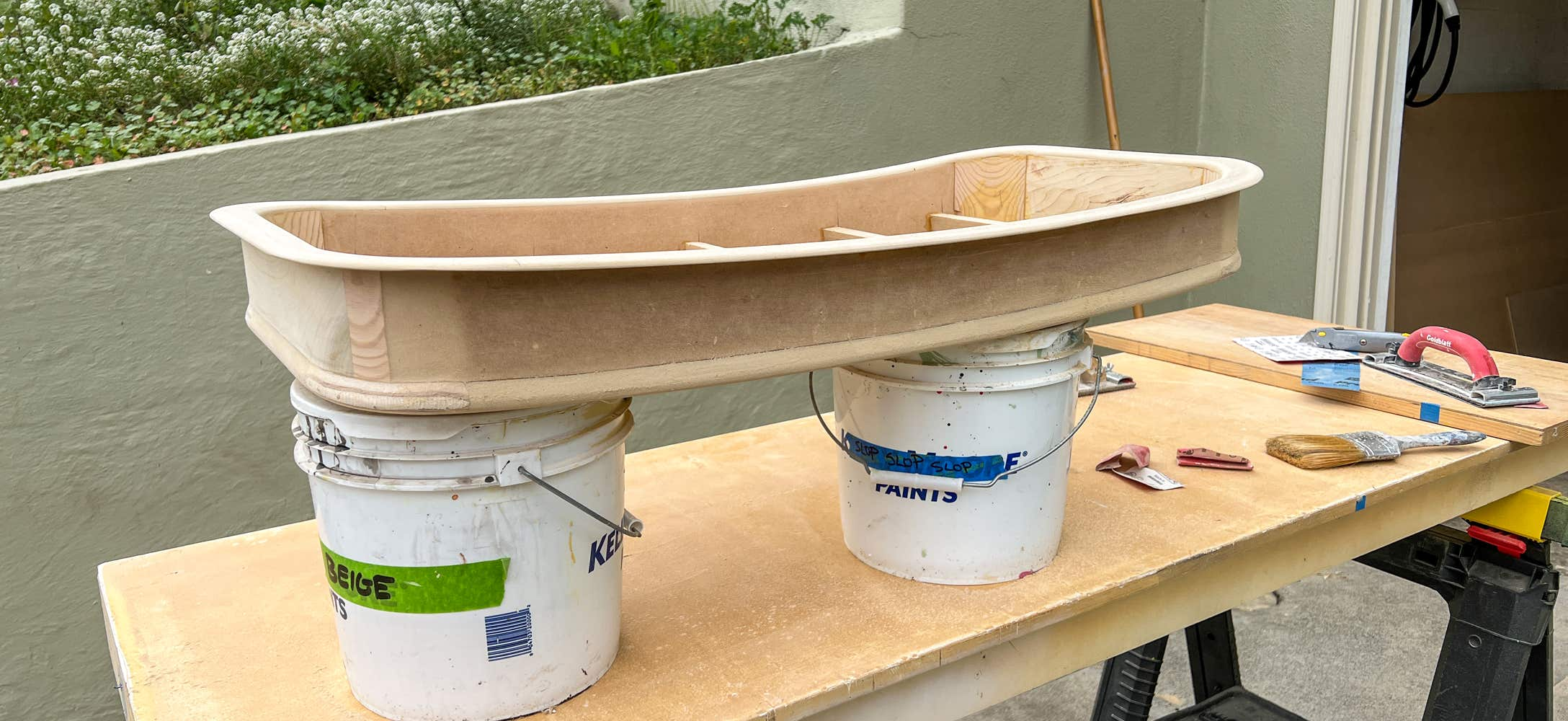
All the pieces together to make the Flyer body. 27 pieces in all, pine, poplar and MDF were used.

Spray painted red coat
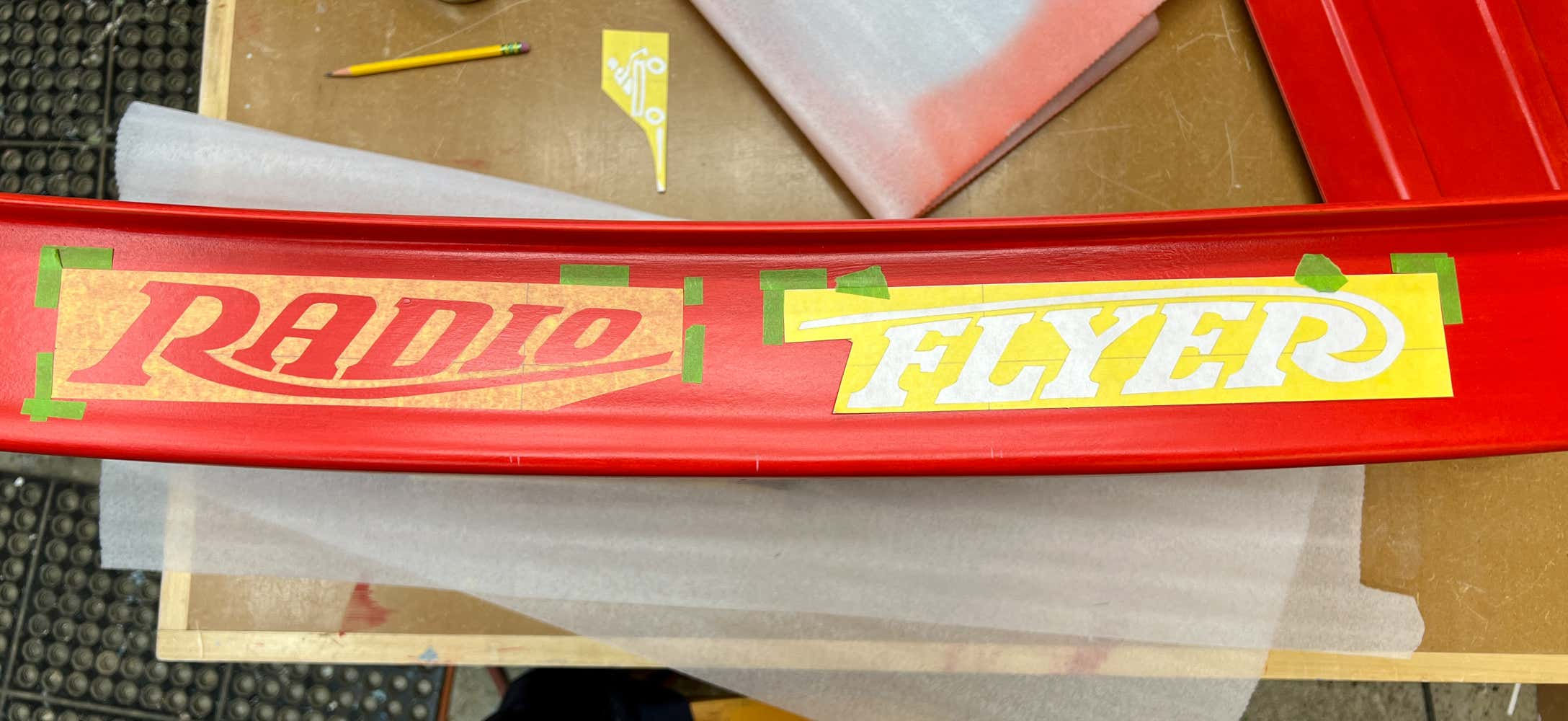
I applied Yellow Frog tape to backing material, printed design, hand cut tape and sprayed logo
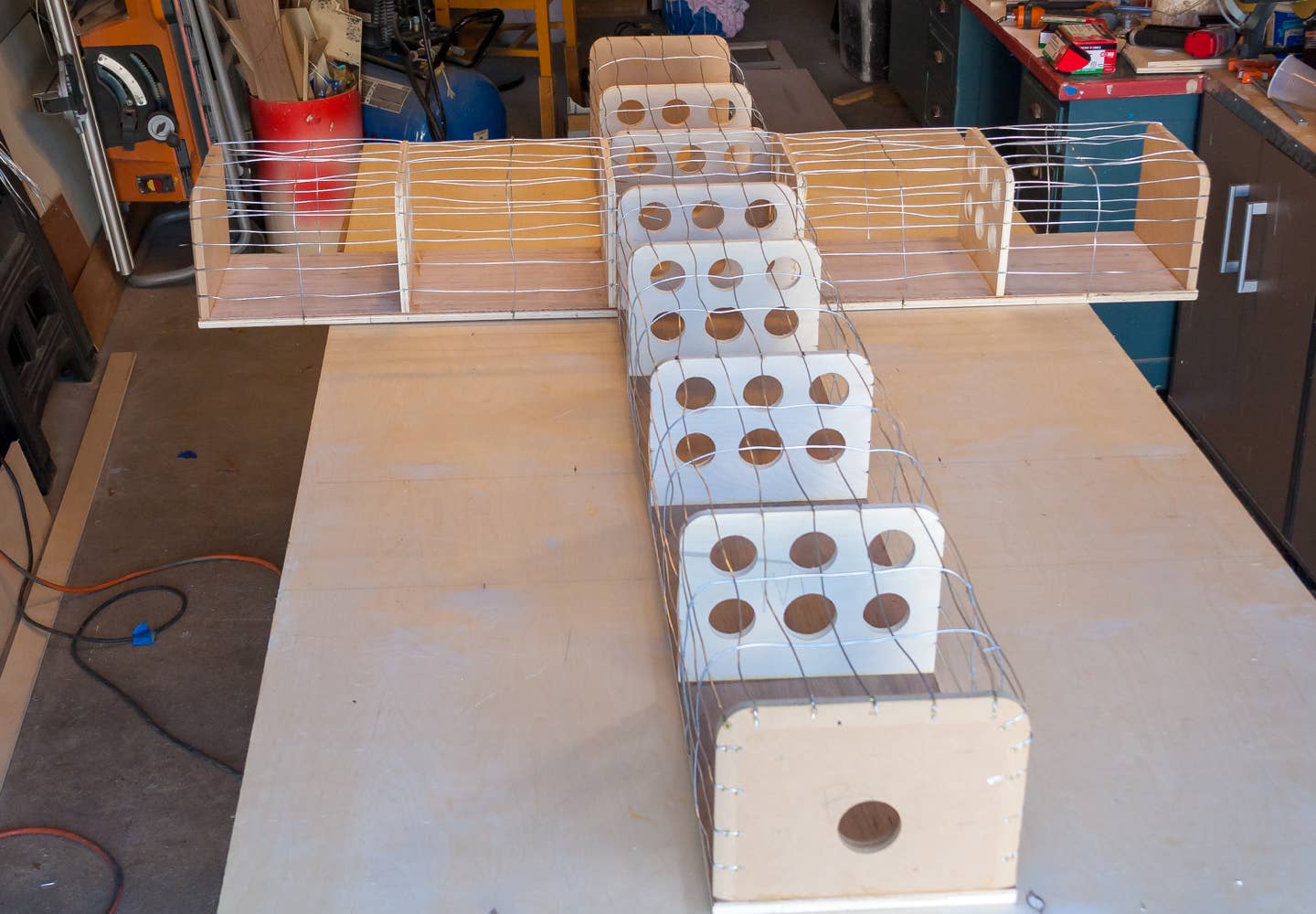
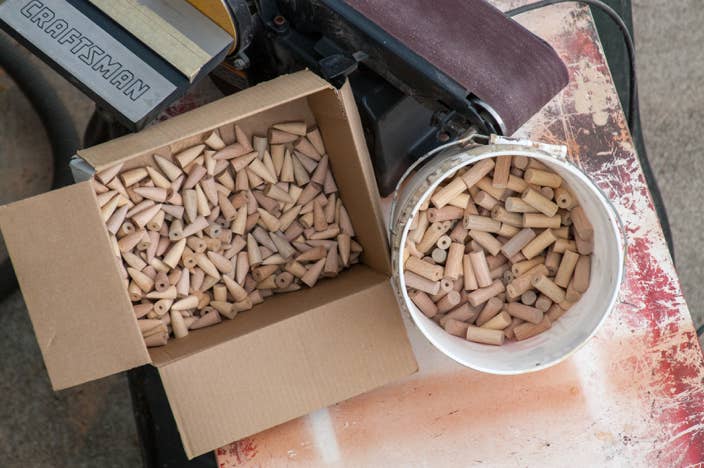
Shaping dowel spears for 150 Years frame
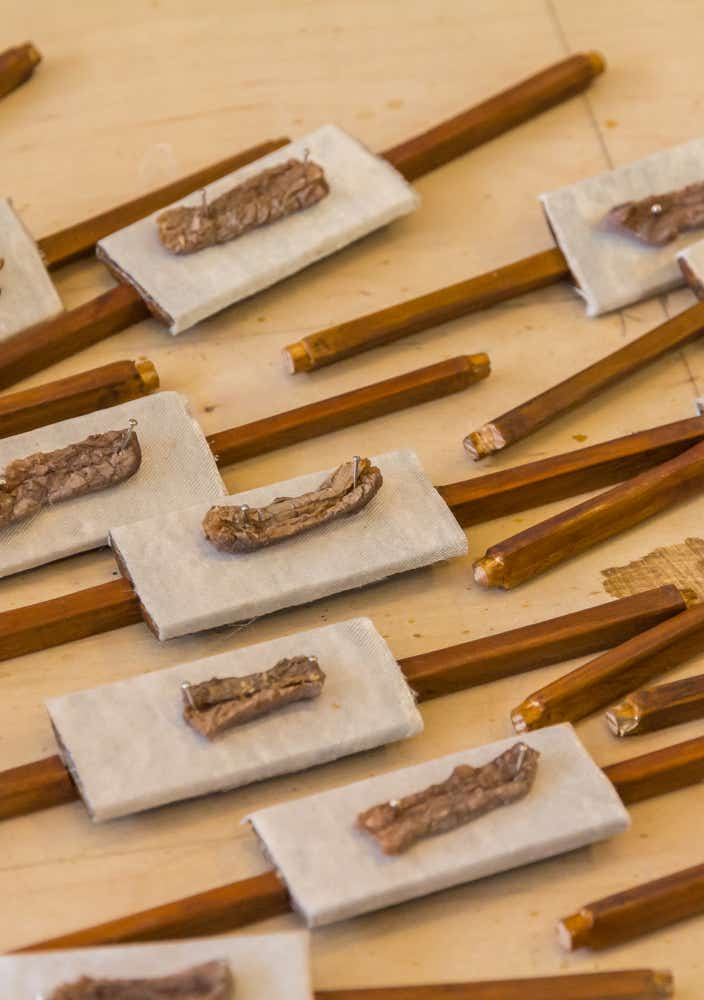
Framework for Unauthorized Access cruciform bed
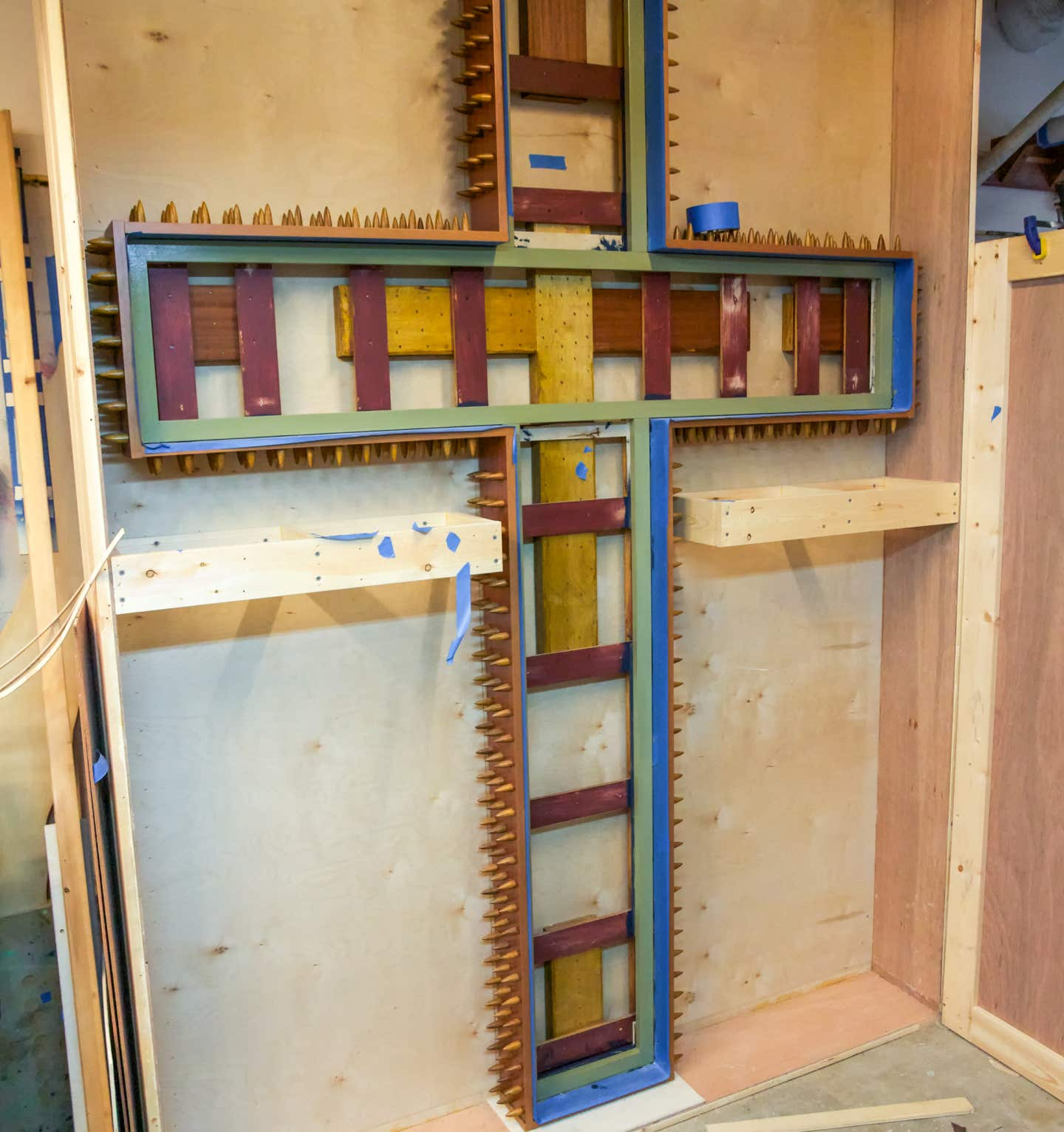
A few of the 15 cast rubber specimens for the Holy Prepuce Reliquaries. Link is to a Google image search that uses my faux reliquaries extensively! The Holy Prepuce was Jesus’ foreskin and a pilgrimage to see the Reliquary afforded you a 10 Indulgence. (Time off of purgatory)
Below is the mortise and tenoned 12” chair inside I Am Not and Army.
Outside frame for 150 Years on Indulgence in its crate. Green base color for faux metal interior.
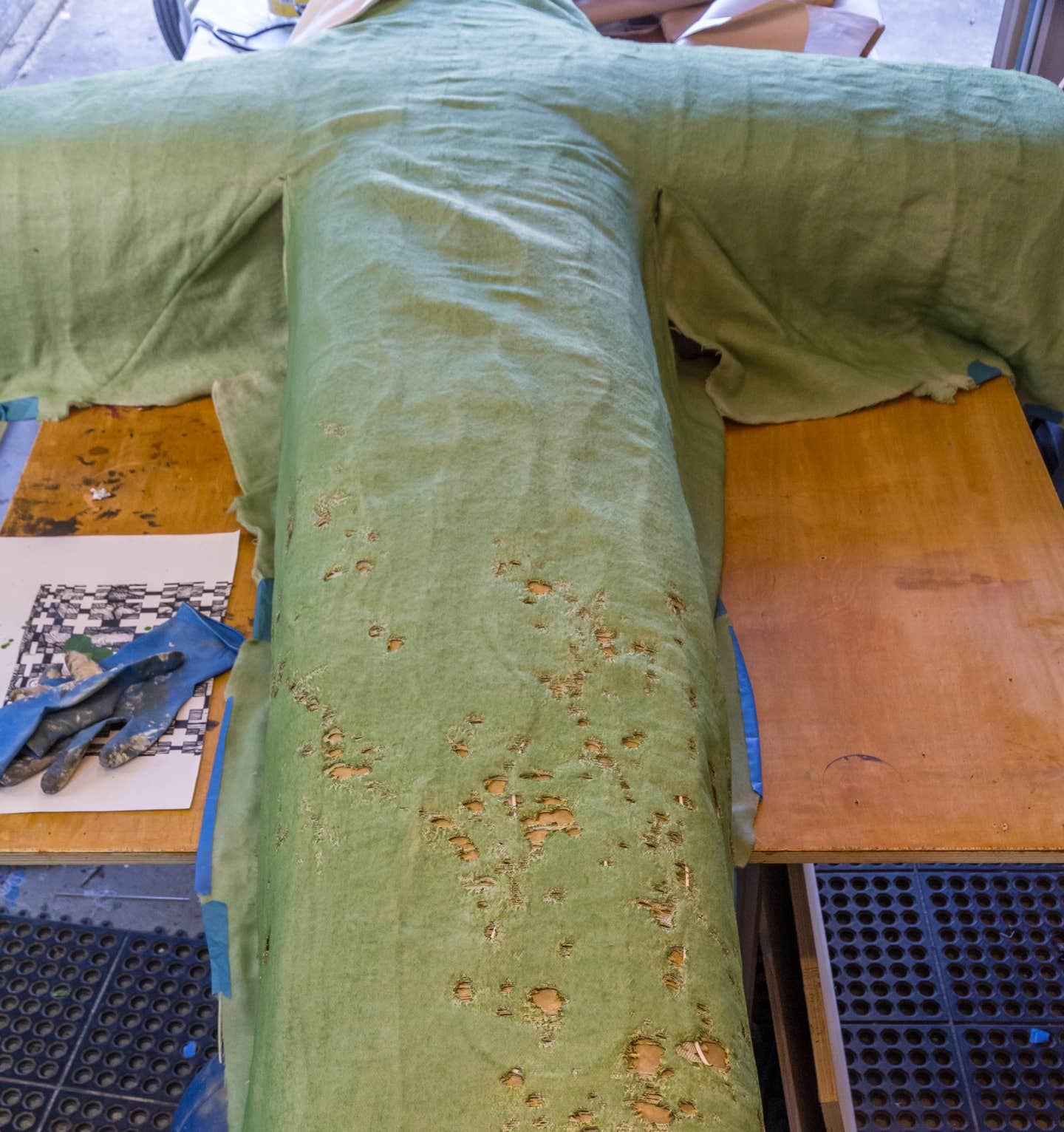
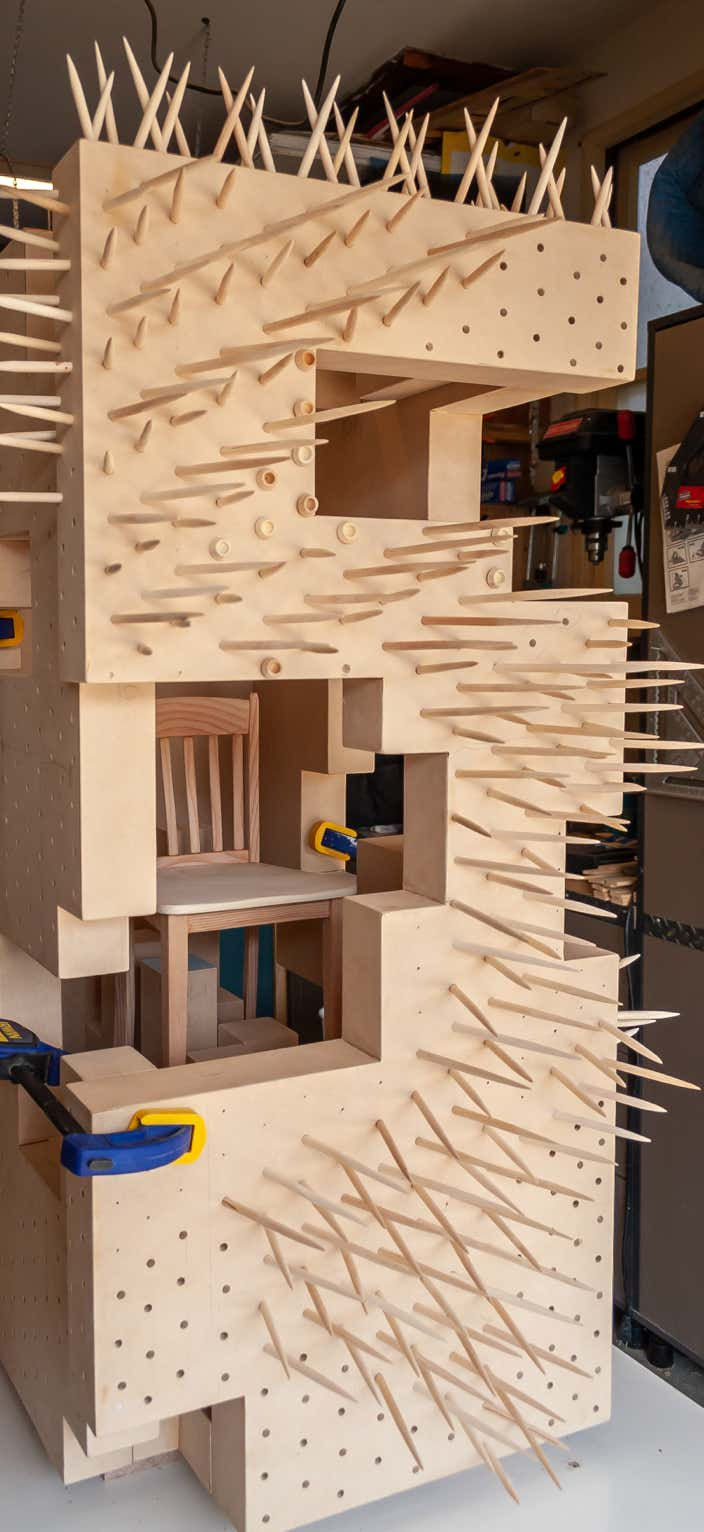
Electric Blanket detail for the Dominion cross piece, created holes with heat gun and aged fabric.
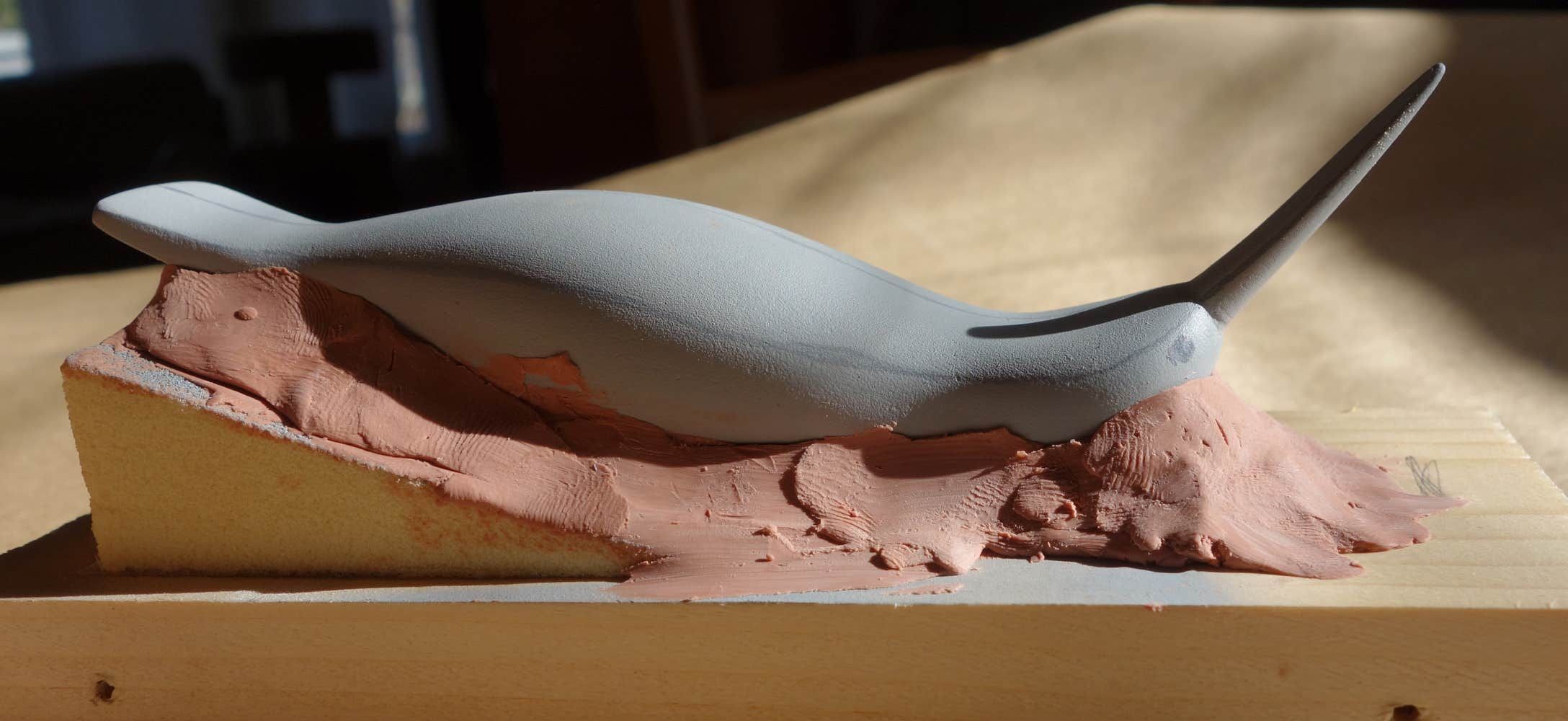
Hummingbird body used to make molds for casting the 100 bodies of “I’ve Not Had Enough of You”
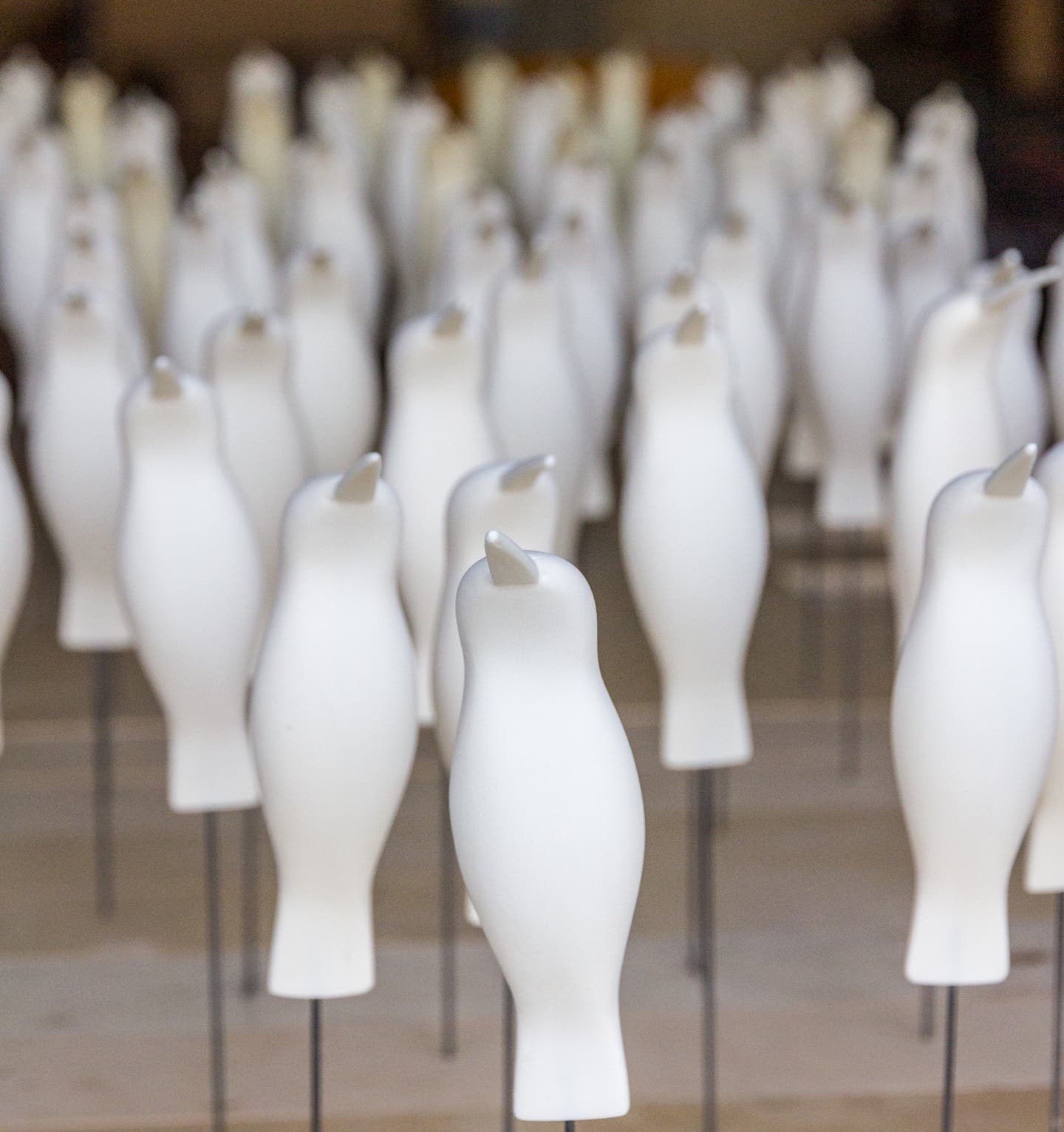
100 cast and primed hummingbird bodies ready for finish paint work. I wound up taking 17 or so steps to complete. I tried to keep them as identical as possible to add to nightmare effect of a swarm of beautiful drones with bad intent…

Throats painted and holes drilled for faux cameras. I hollowed two bodies out and drilled a hole in birds belly to put real cameras.

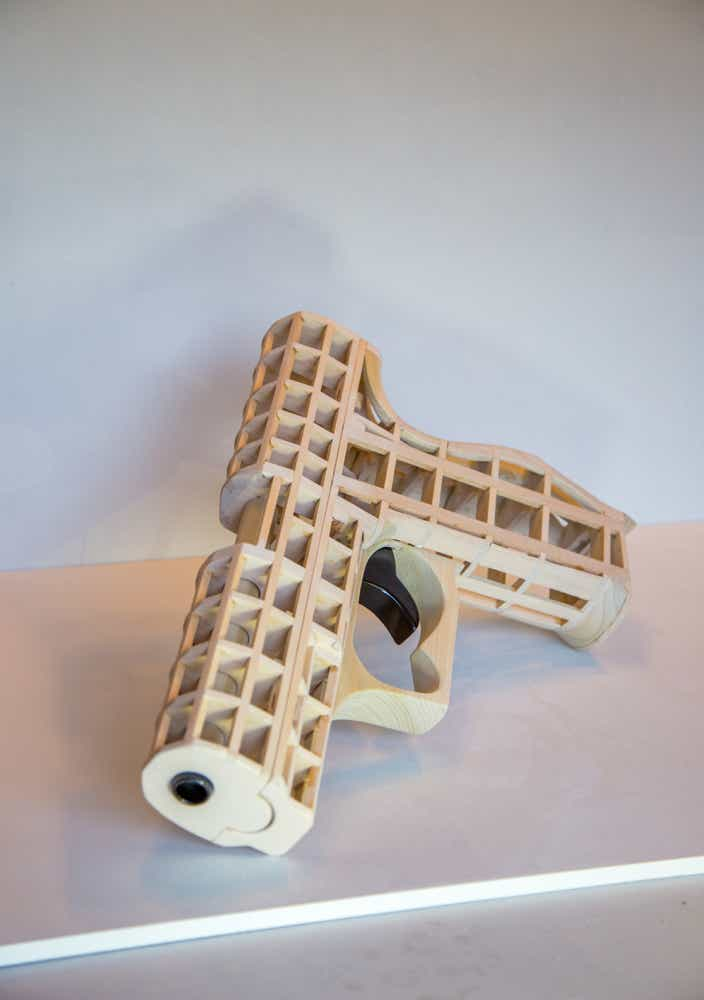
Bird pew crate, this houses 50 birds. Crate not only protects it organizes wing positions.
Basswood frame for GunPlay
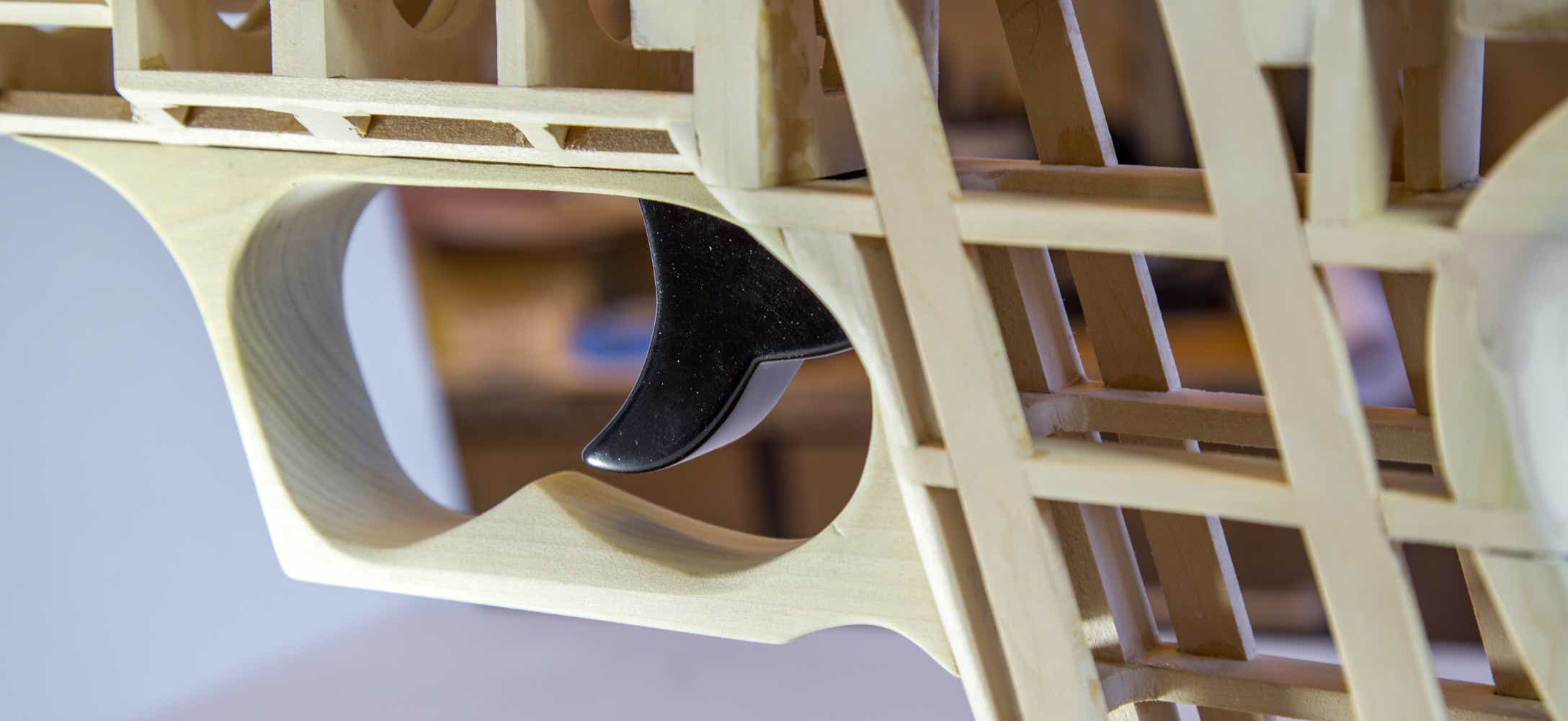
Framing detail for 3 X sized GunPlay and finished trigger
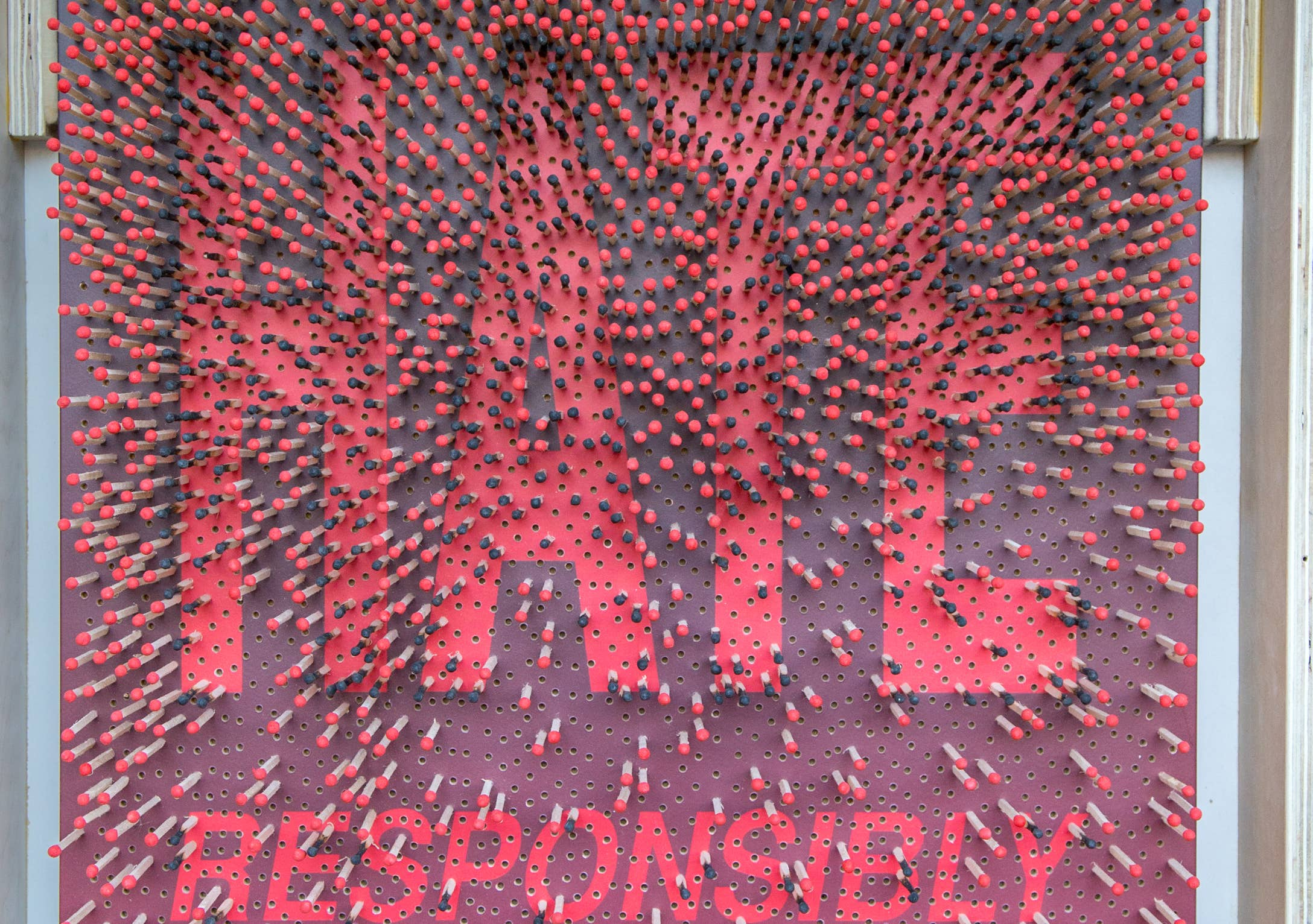
Second version of “Hate” used a more organic layout for a grid resulting in too many faux matches. I took out a few hundred!
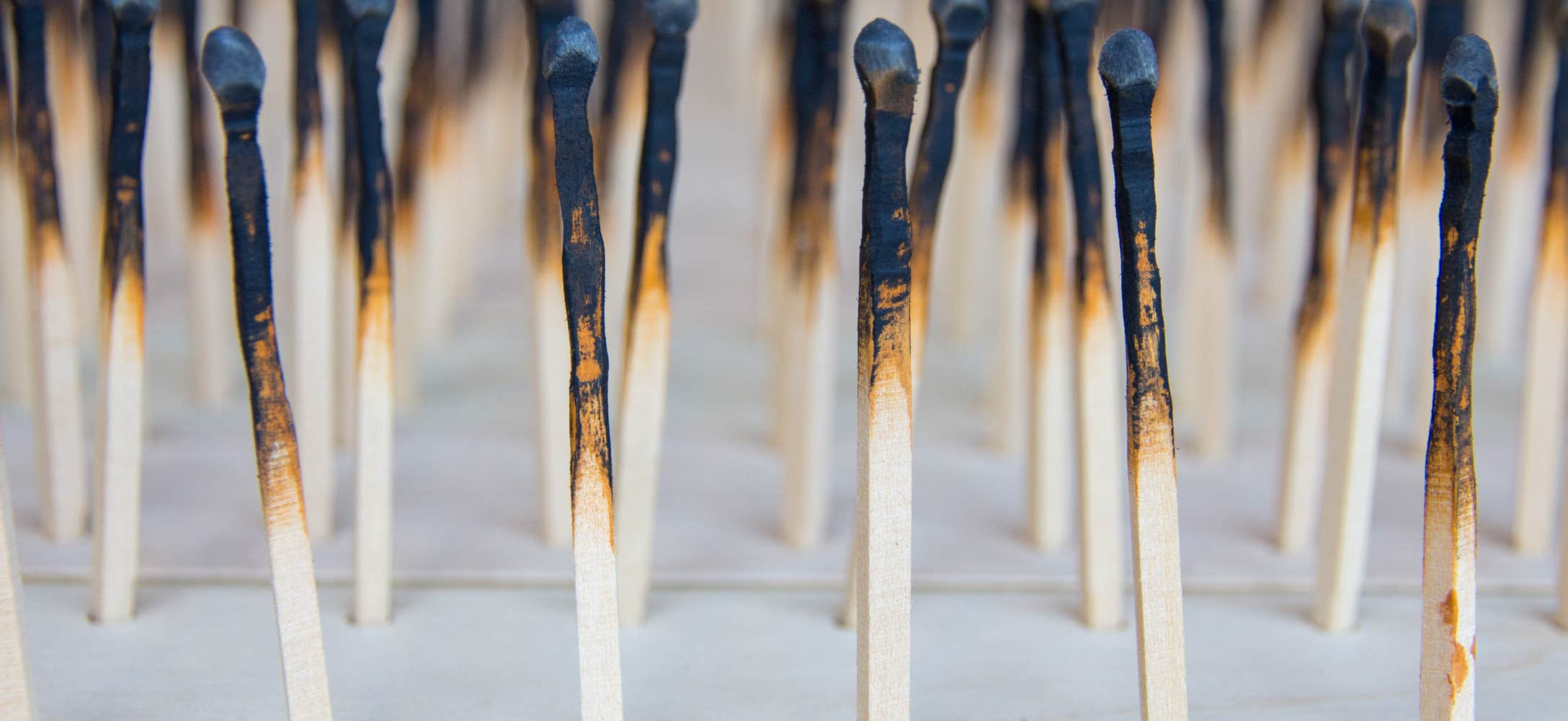
Fresh batch of faux burnt matches, each piece takes thousands!
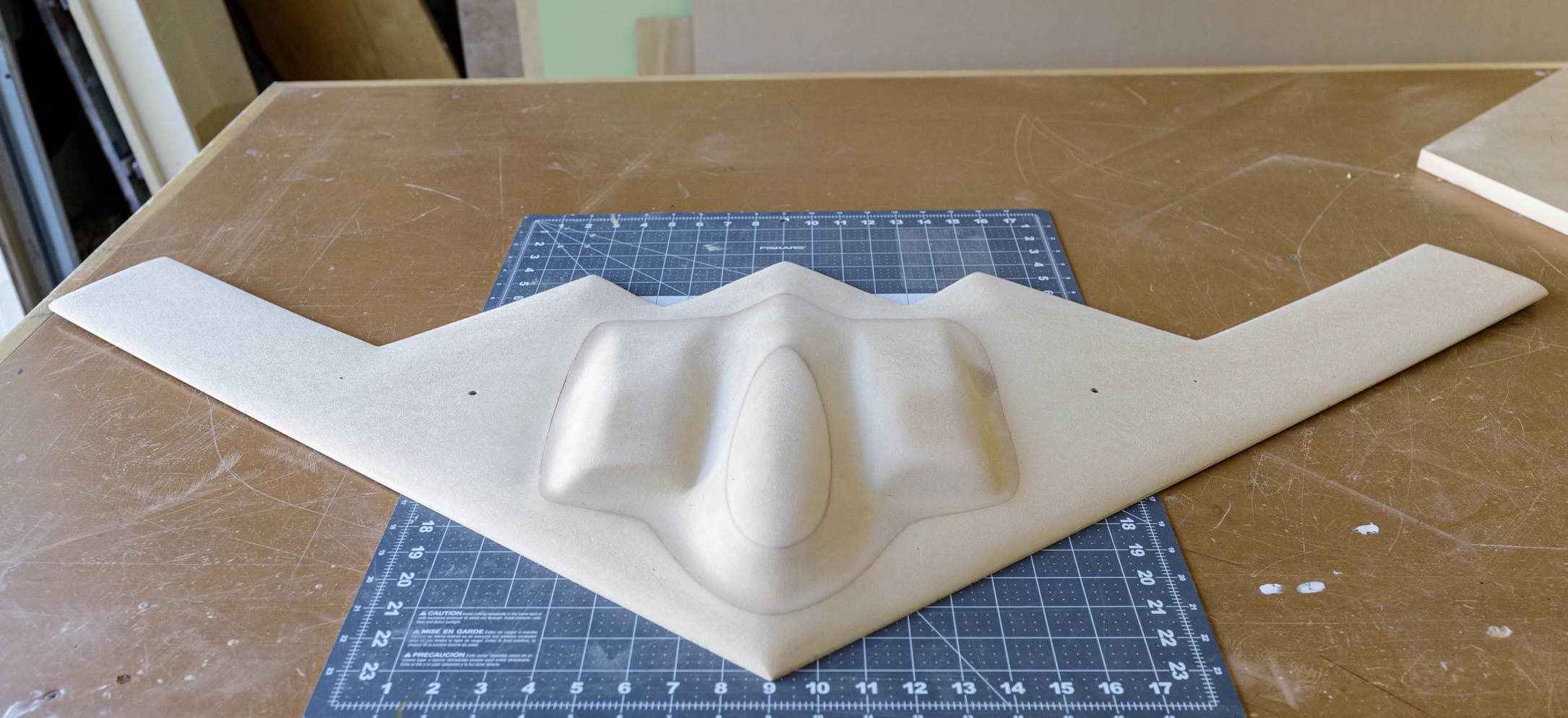
Top half of B-2 consisted of two 3/4” and one 1/2” layer of MDF. The bottom was a 3/4” piece laminated after shaping was done.
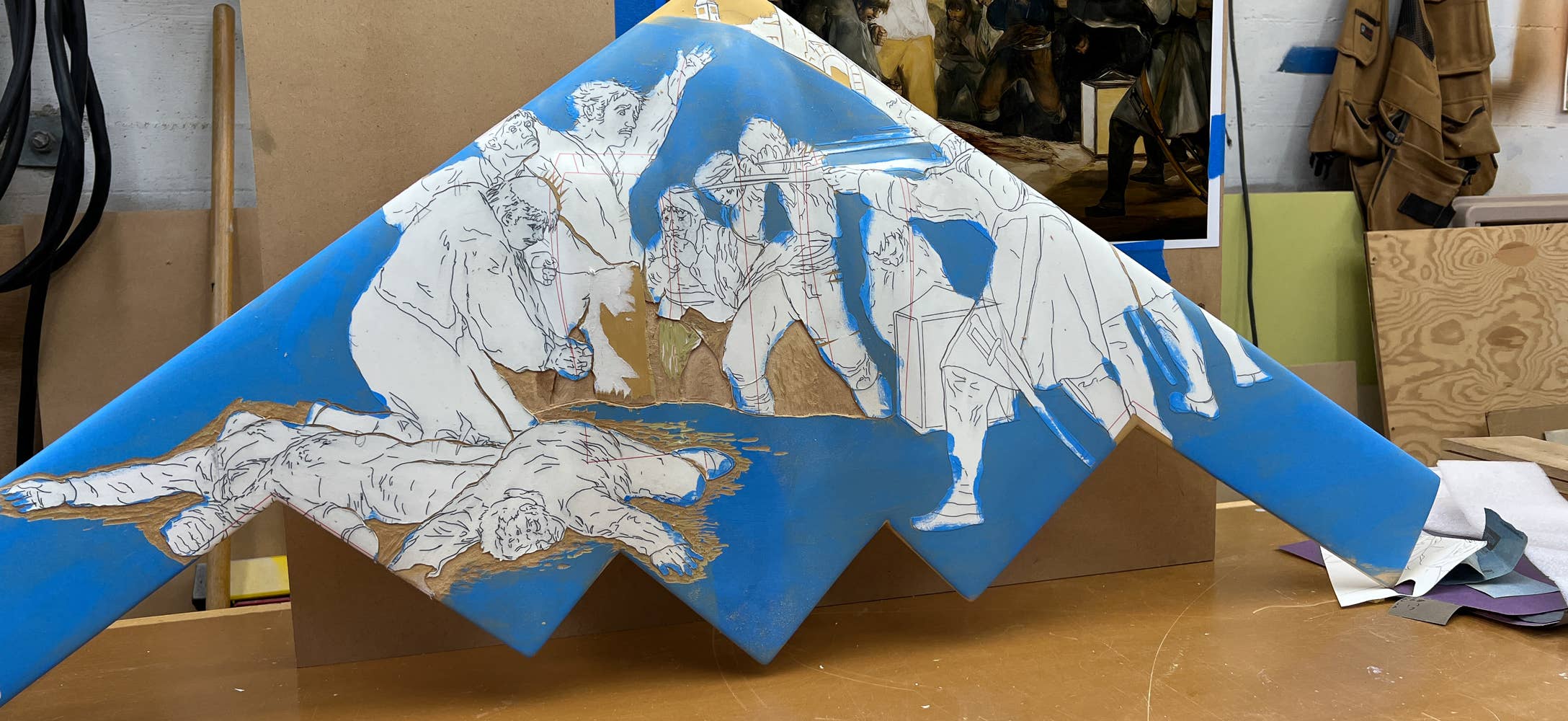
Pictured above is at the start of carving the Goya bas relief on the B-2 bomber. I printed a drawing of Goya’s “ The third of May, 1808” painting, and adhered it to the undulating surface. I established the outlines of the image with an x-acto blade and used chisels to rough out the figures, while maintaining the shapes of the cockpit and engines. I continued this process till I felt there was enough separation of the characters and the painting had come to life.
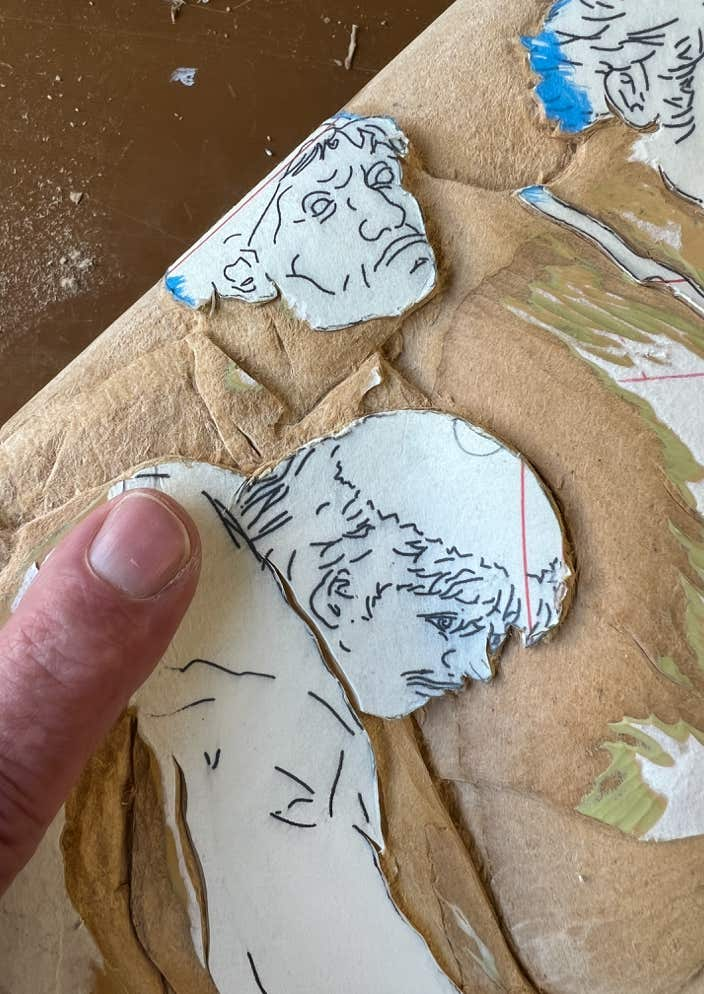
Here I use a finger to show the scale of the faces to be sculpted. The piece uses a particle type board that required priming, sanding repeatedly to render the minuscule details.
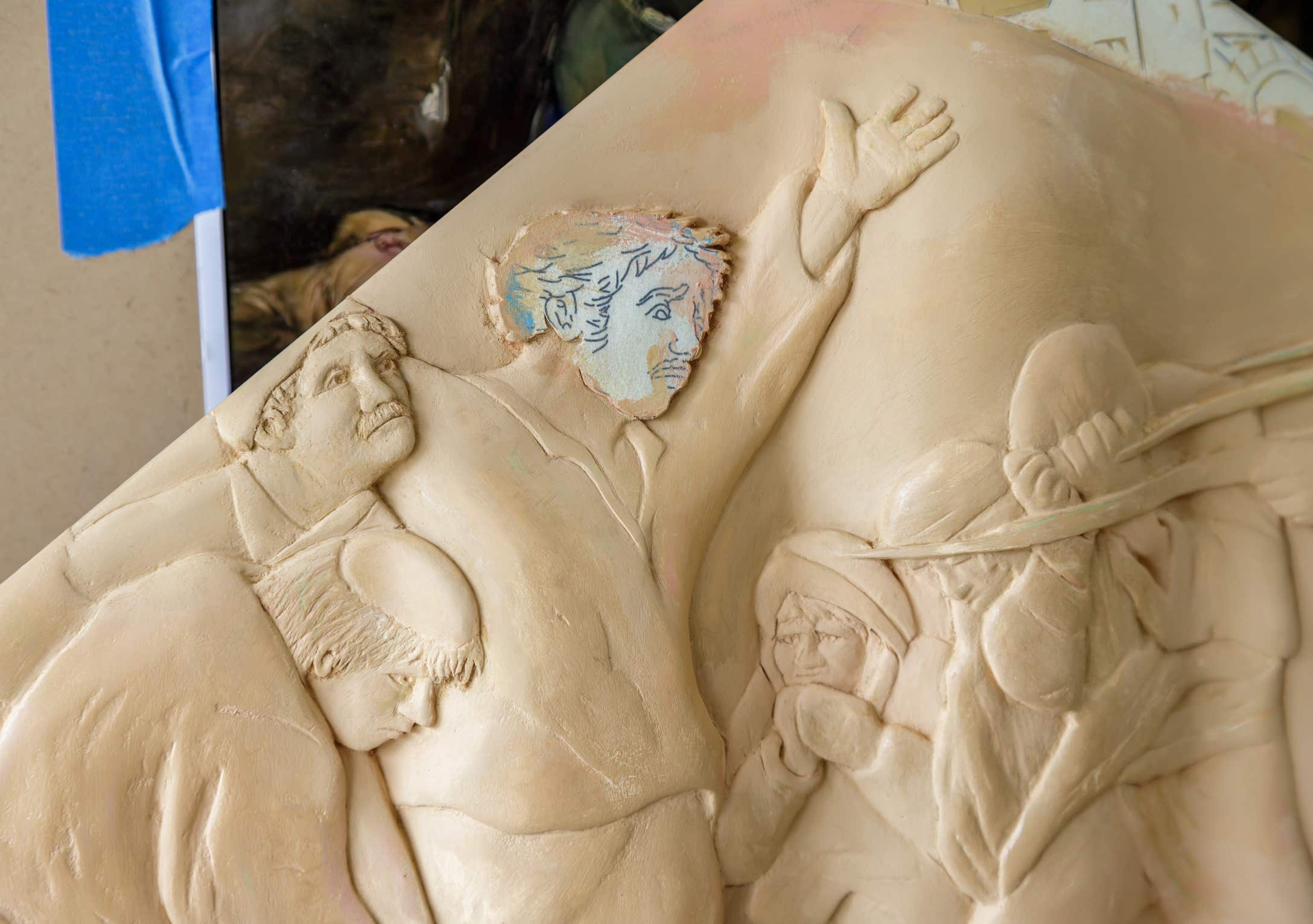

Nearly done with all the carving, the final face probably required another 5-7 hours.
The piece is not finished till a proper crate is built to safely house the artwork. I enjoy this part of the process also. Each crate is unique in how it captures the piece. I started cutting out logos for each crate in 2013.
